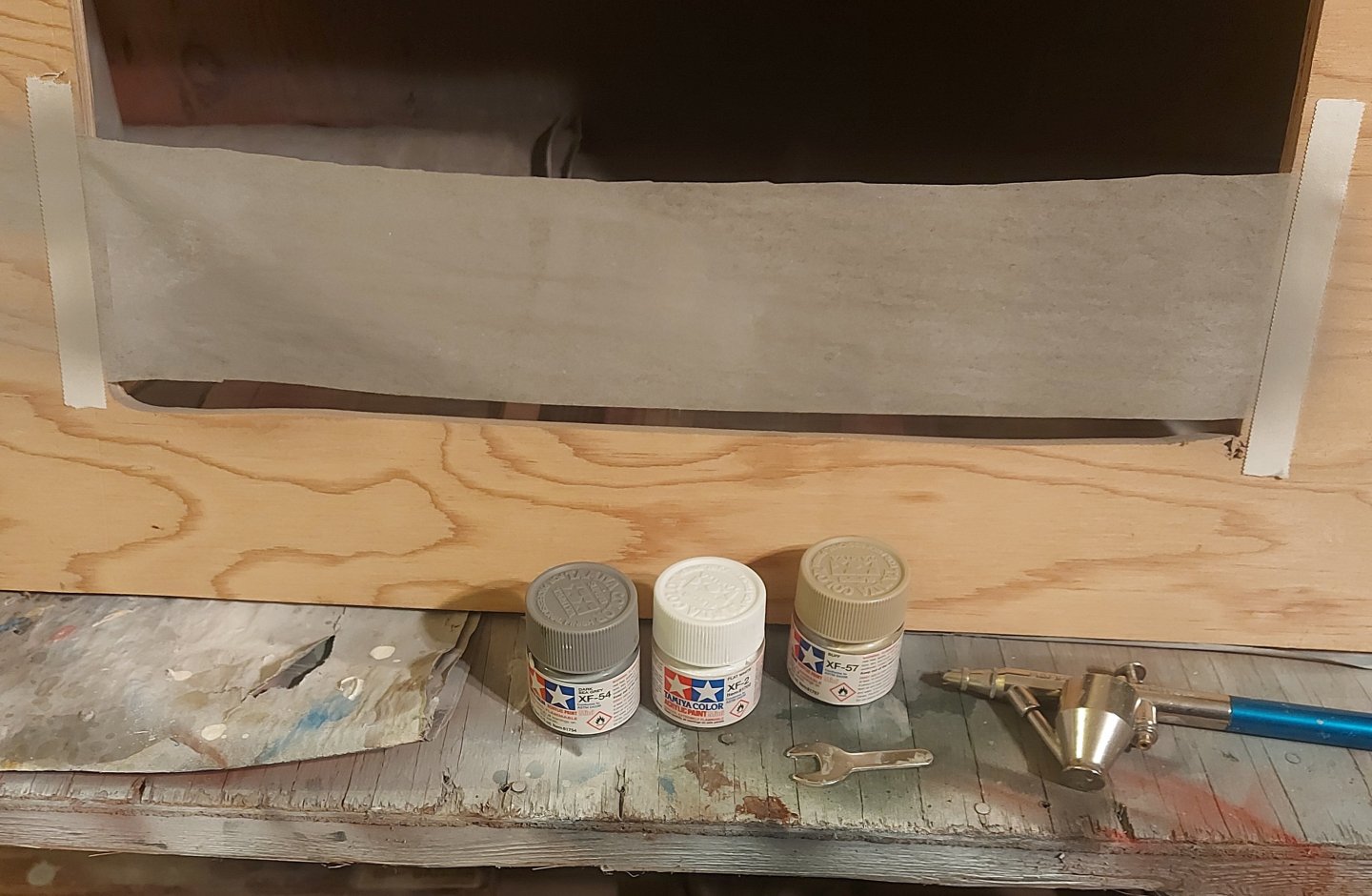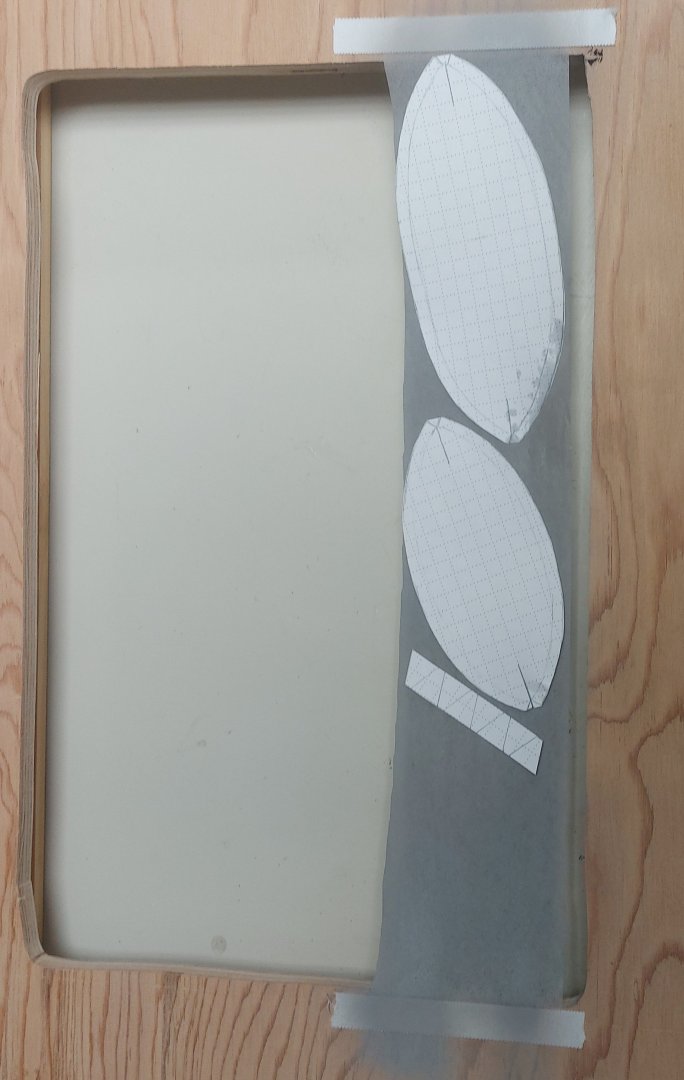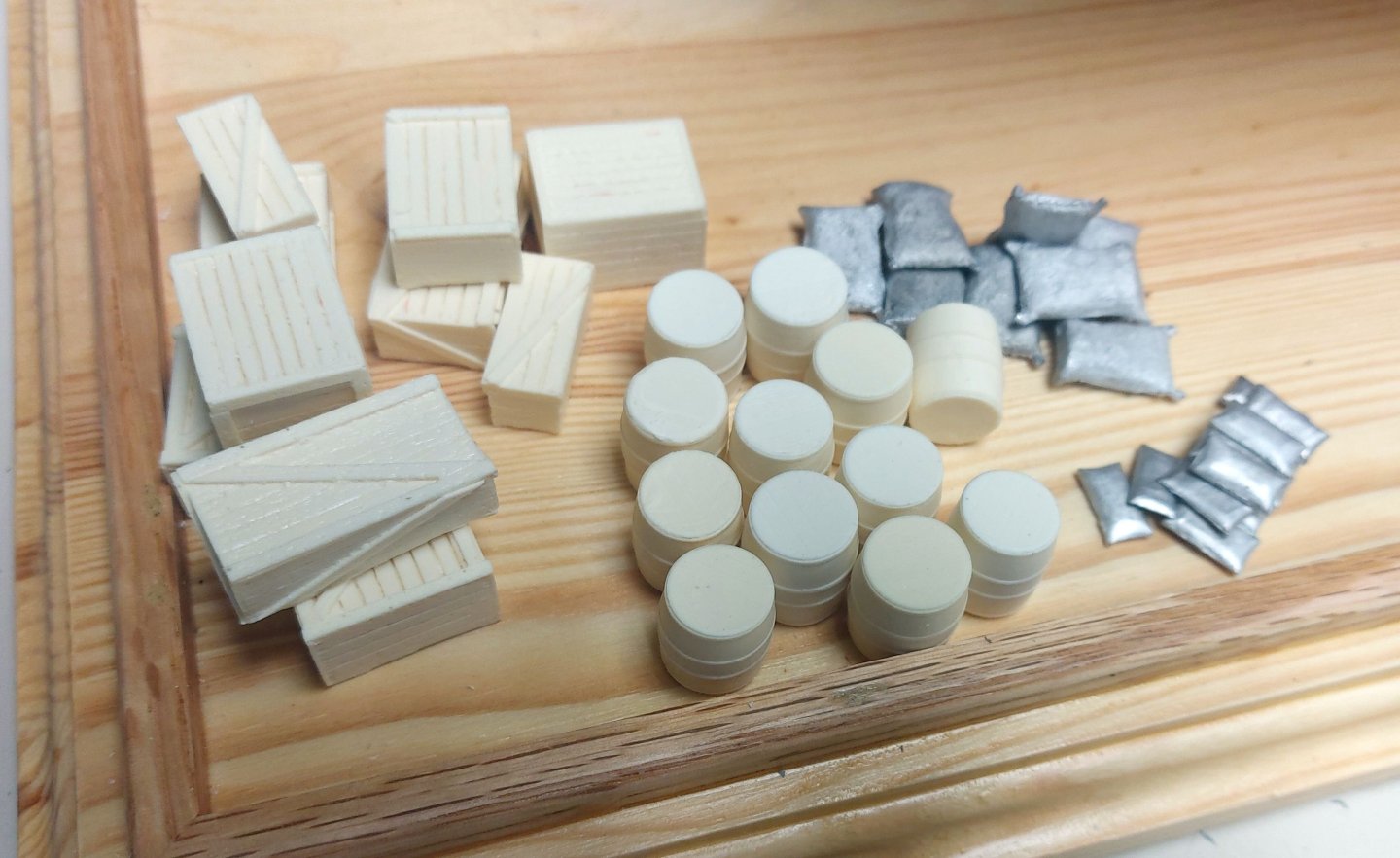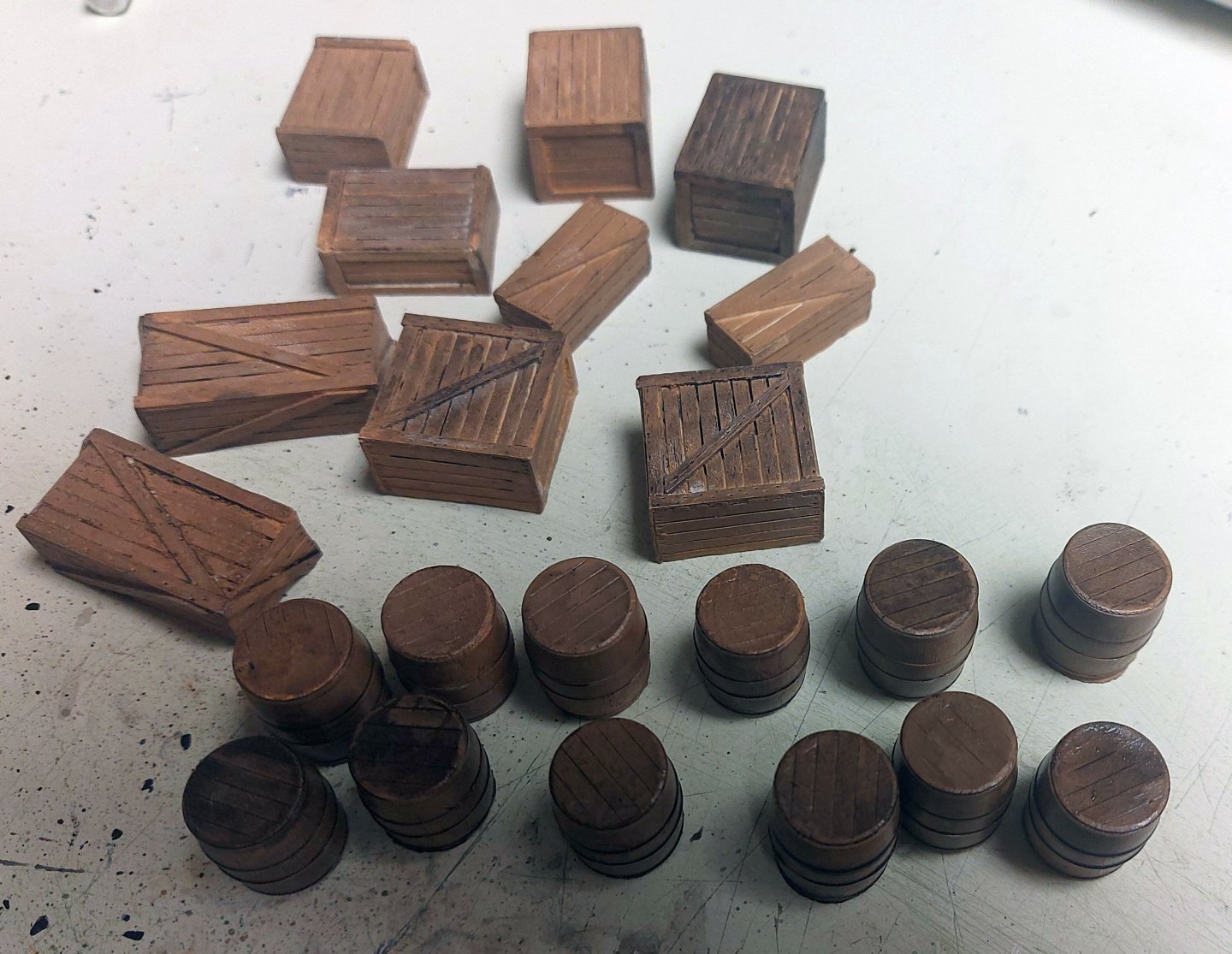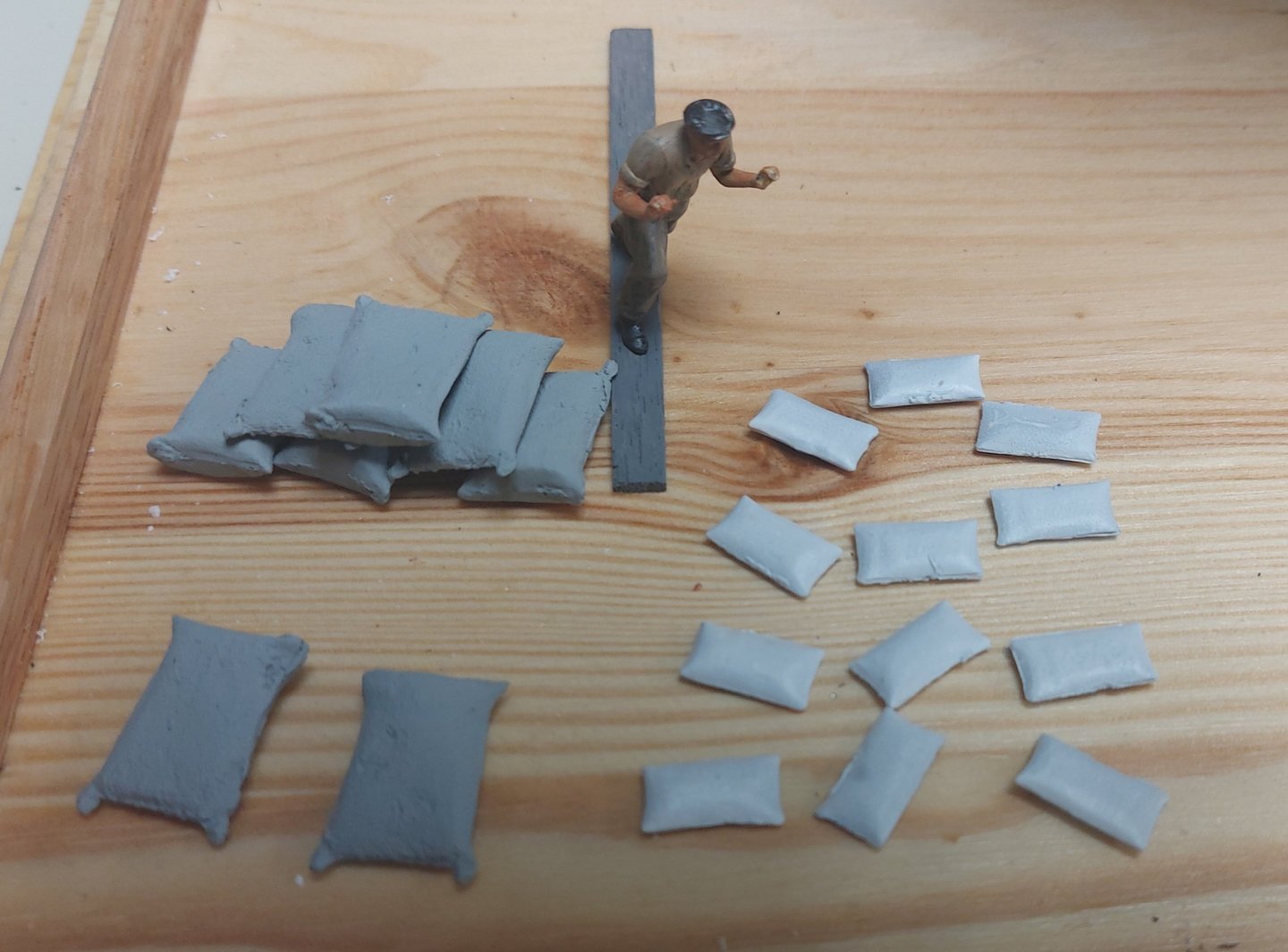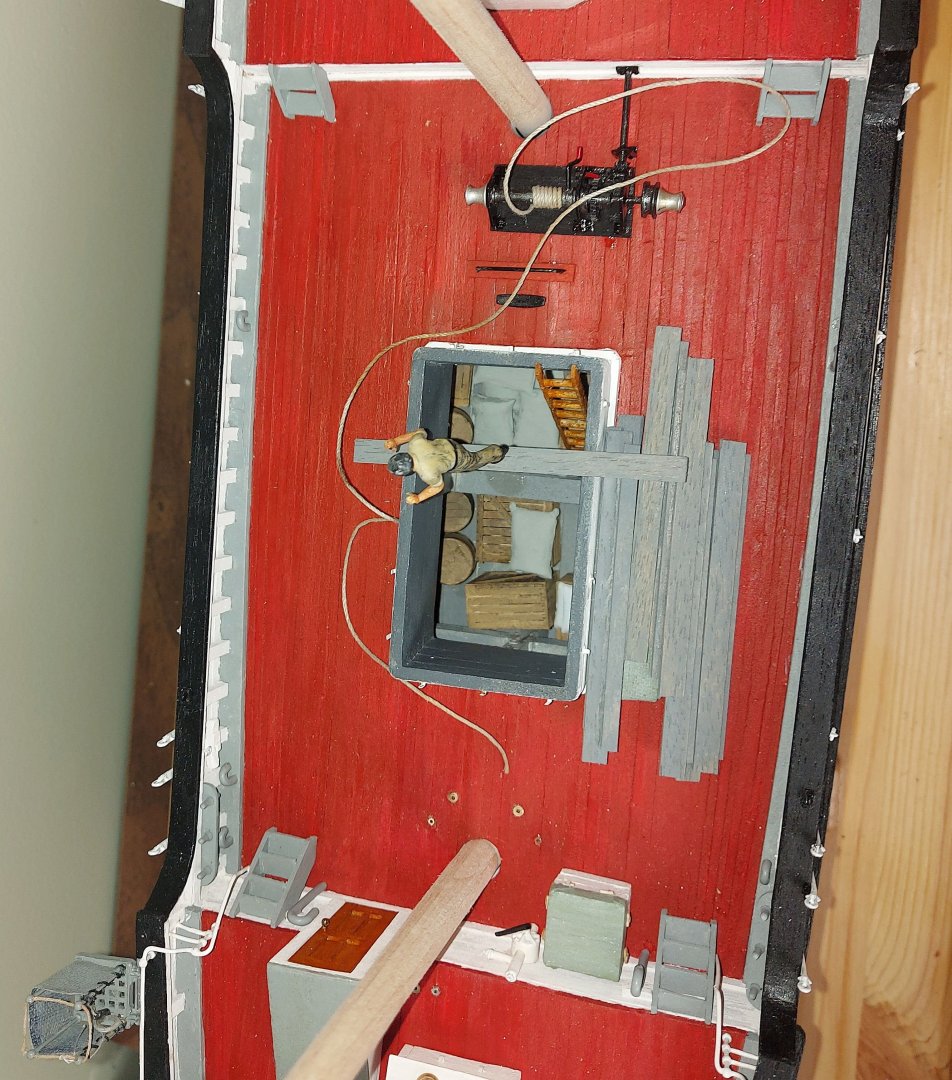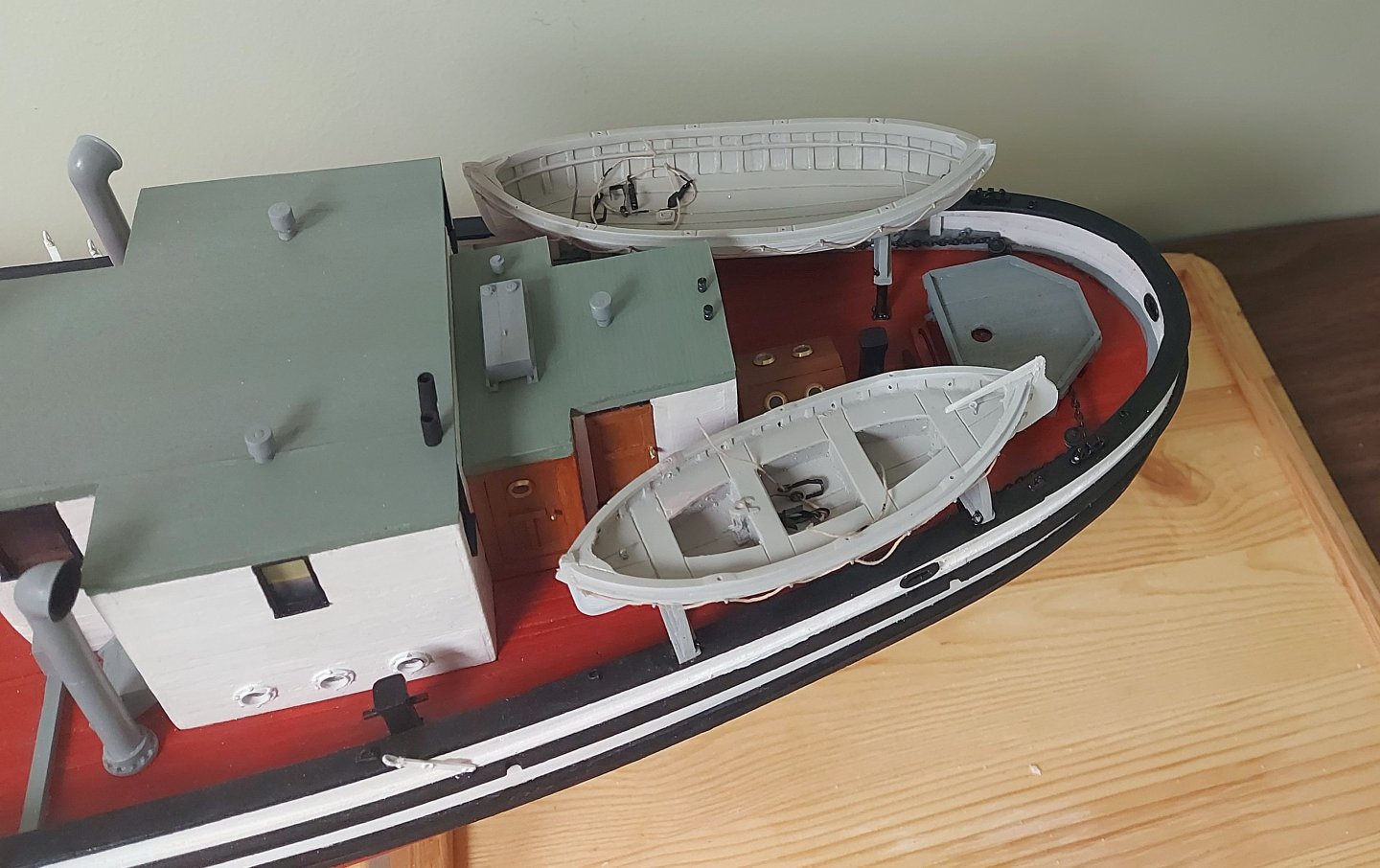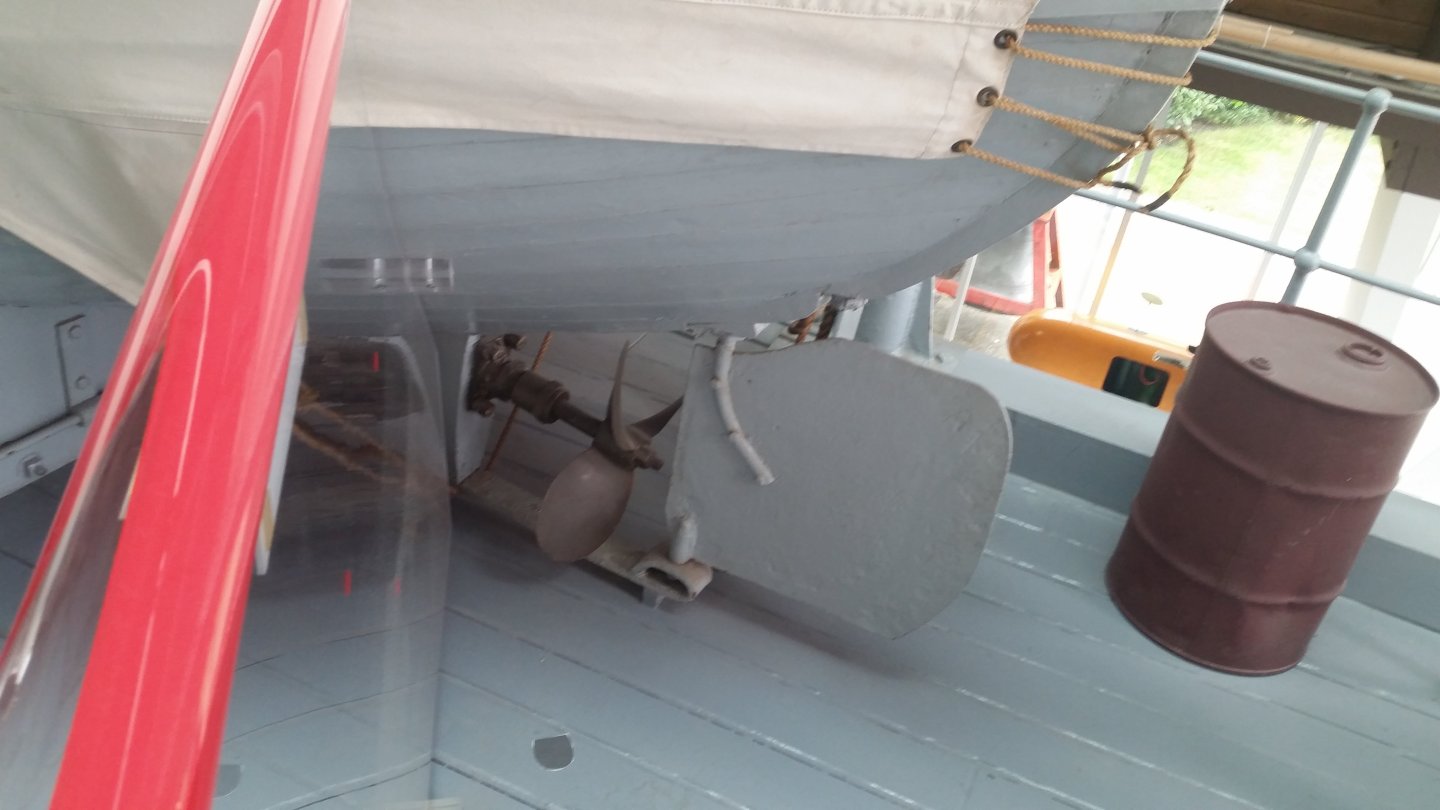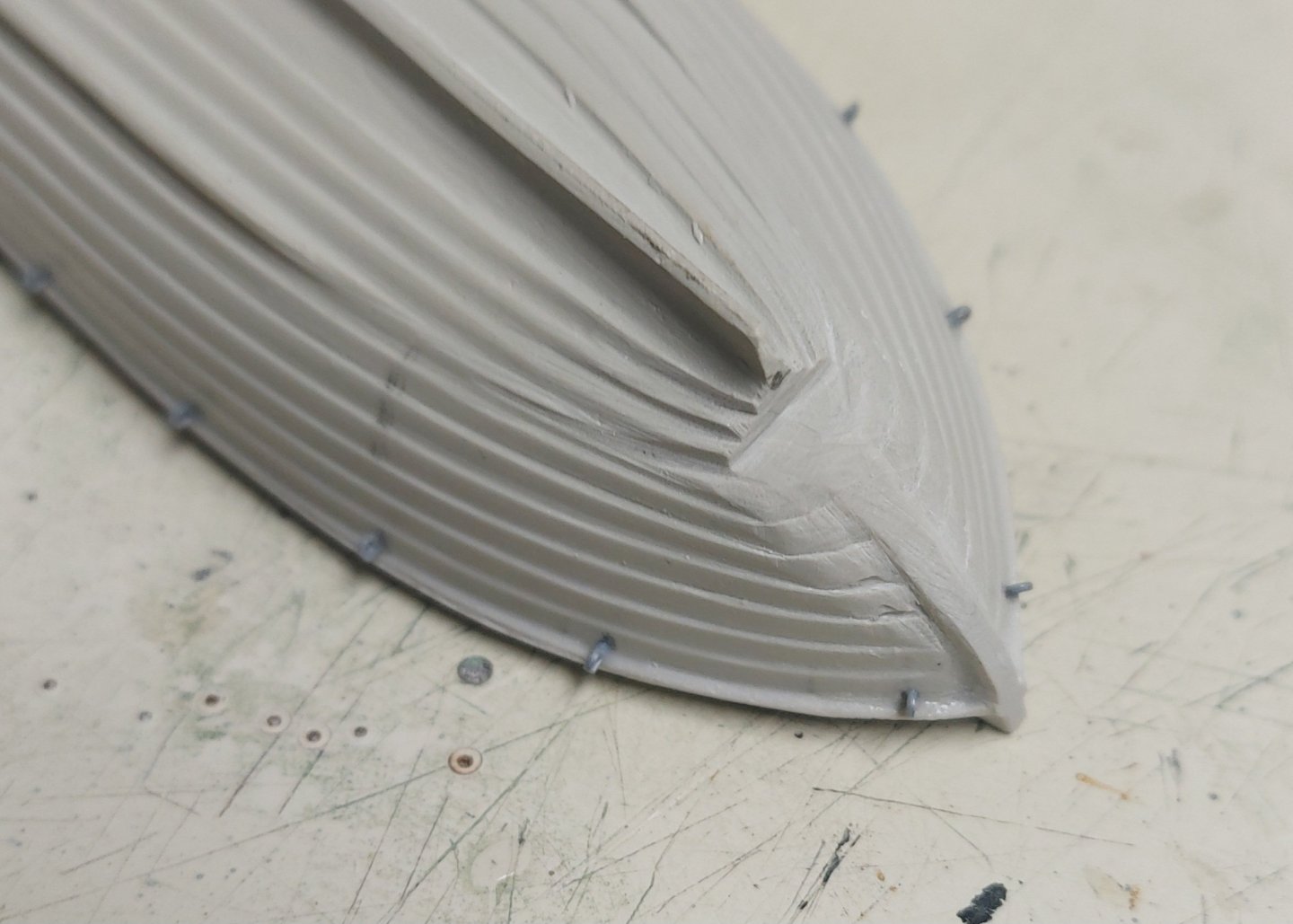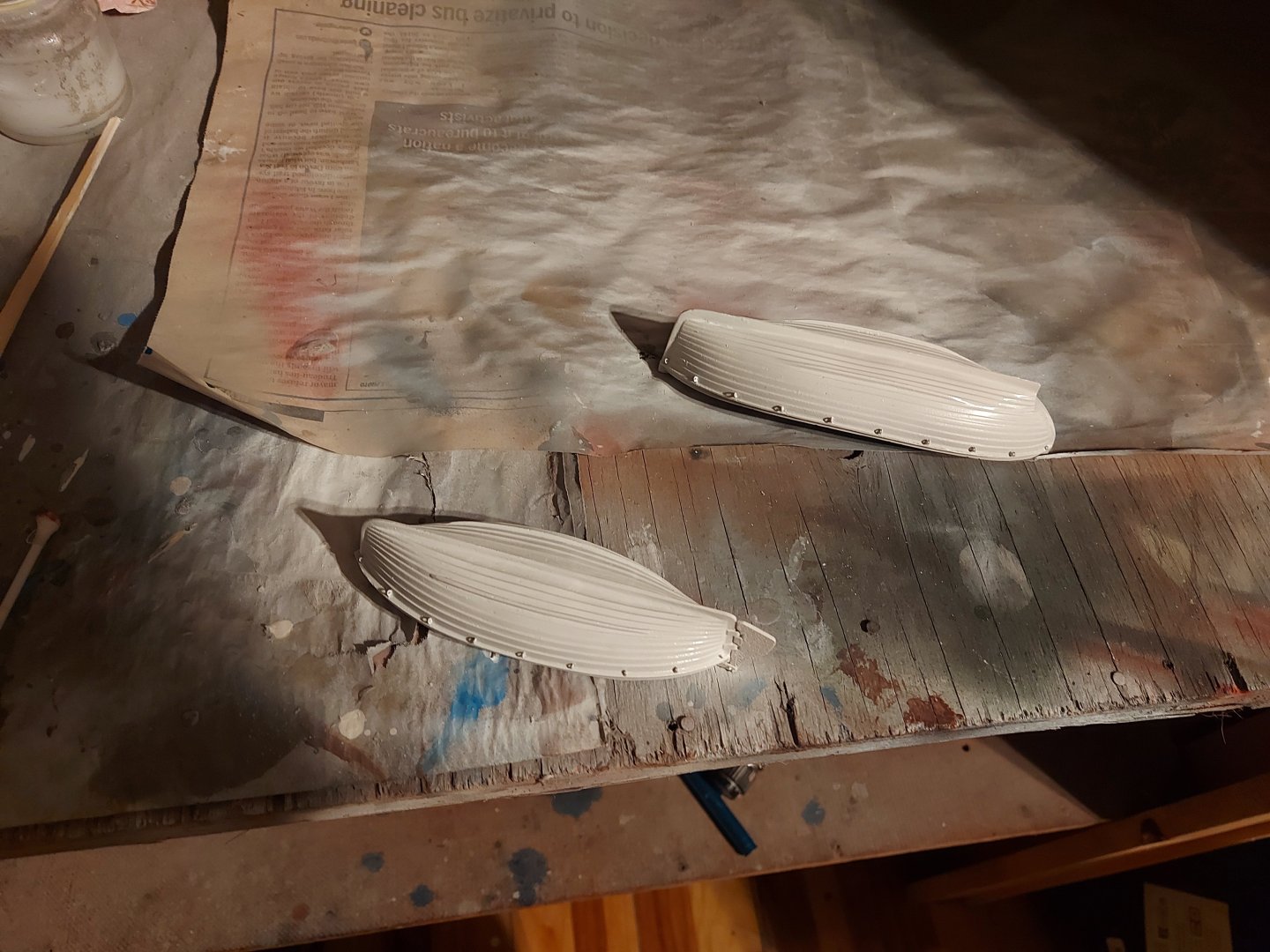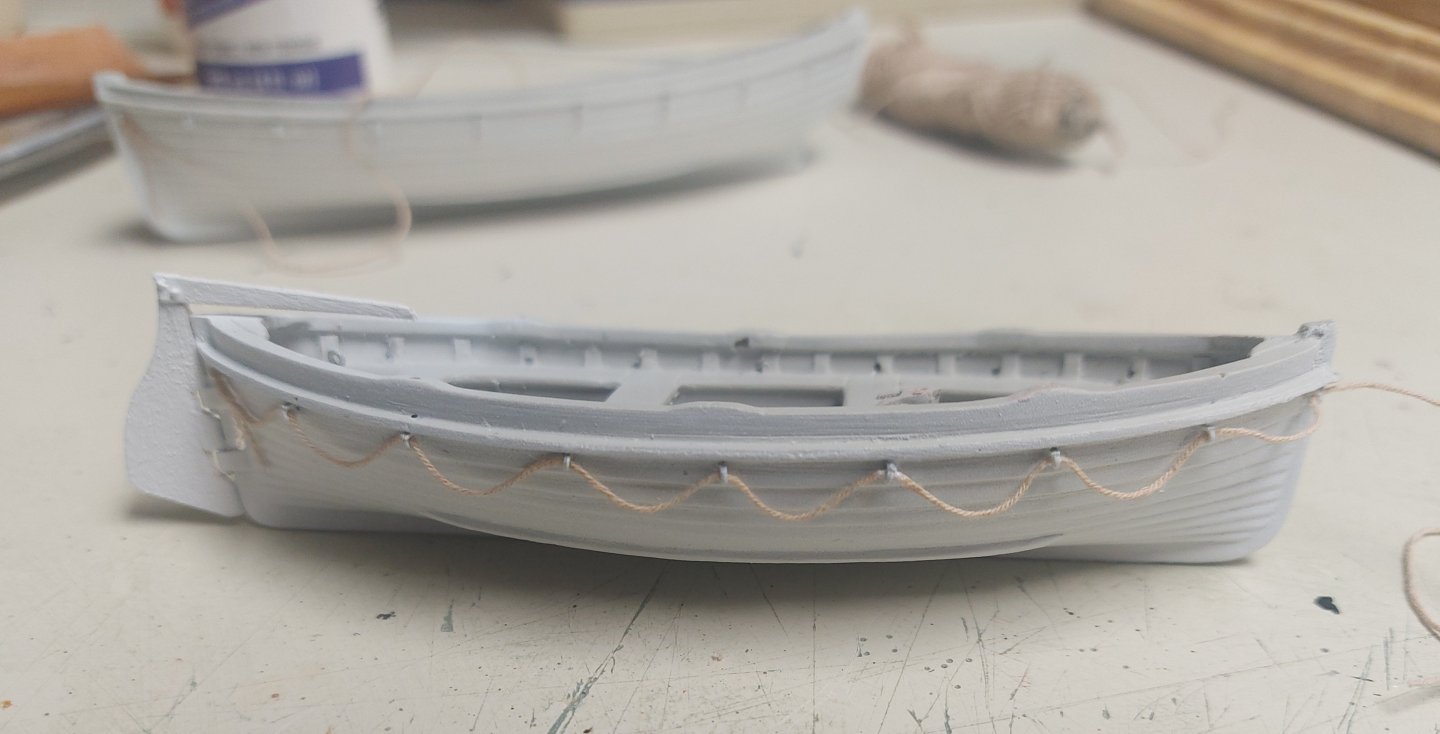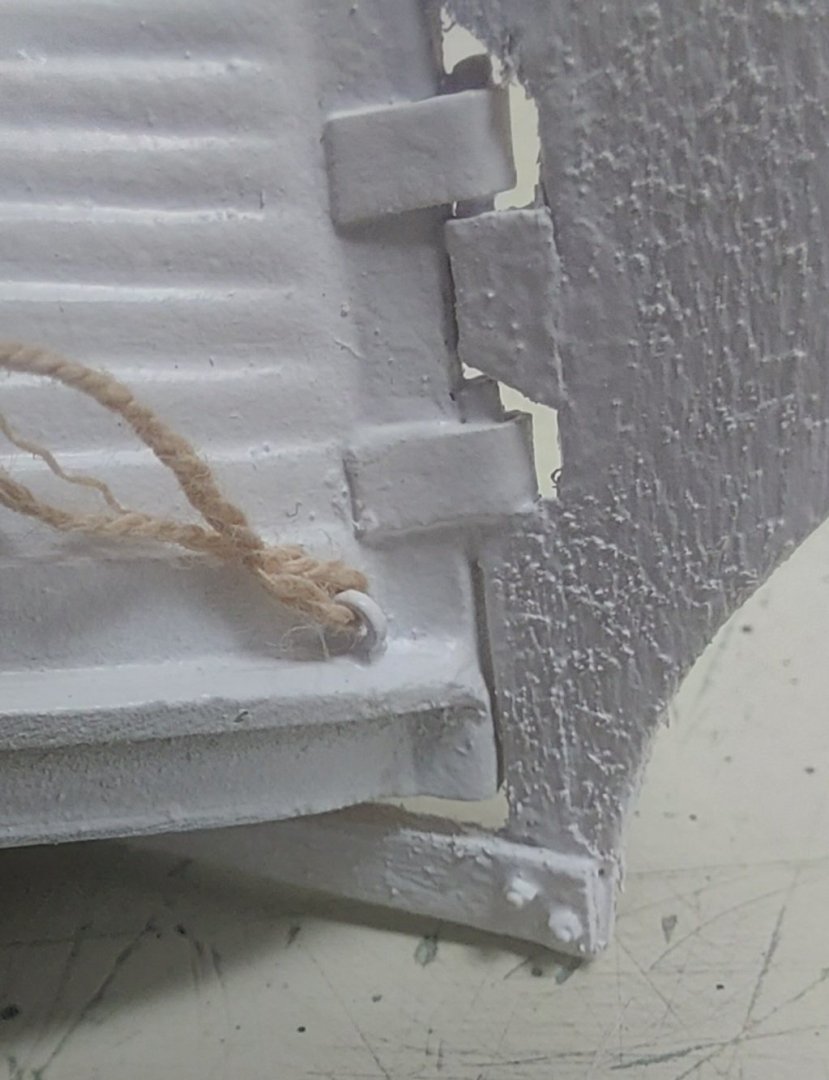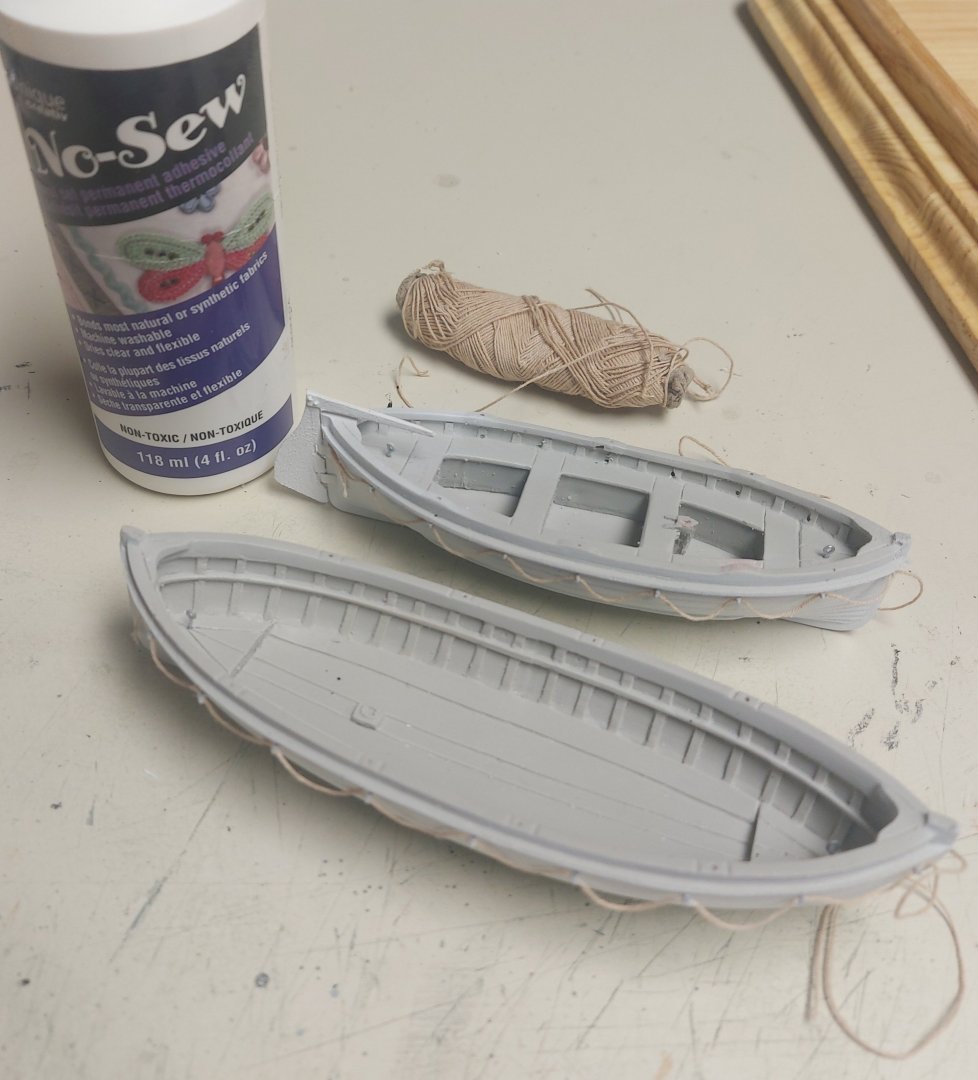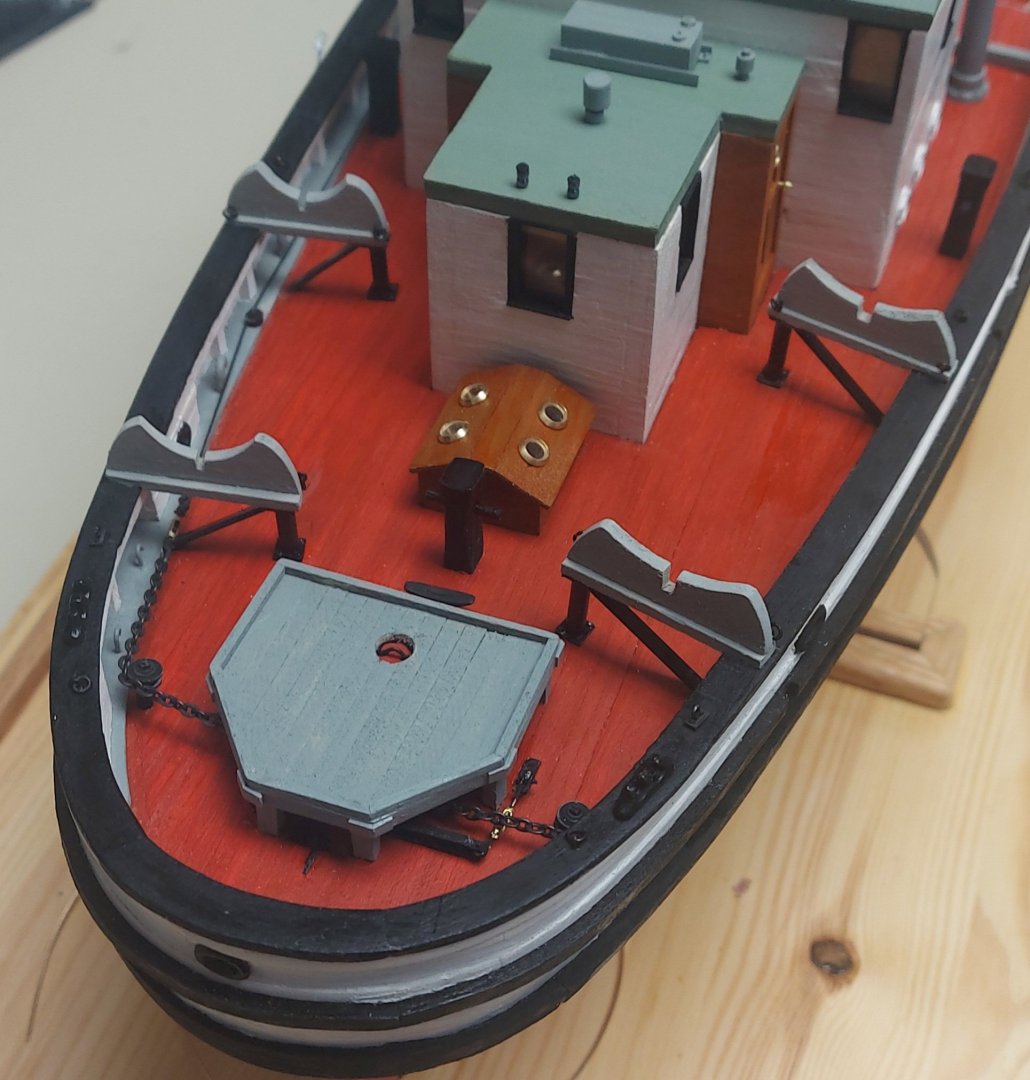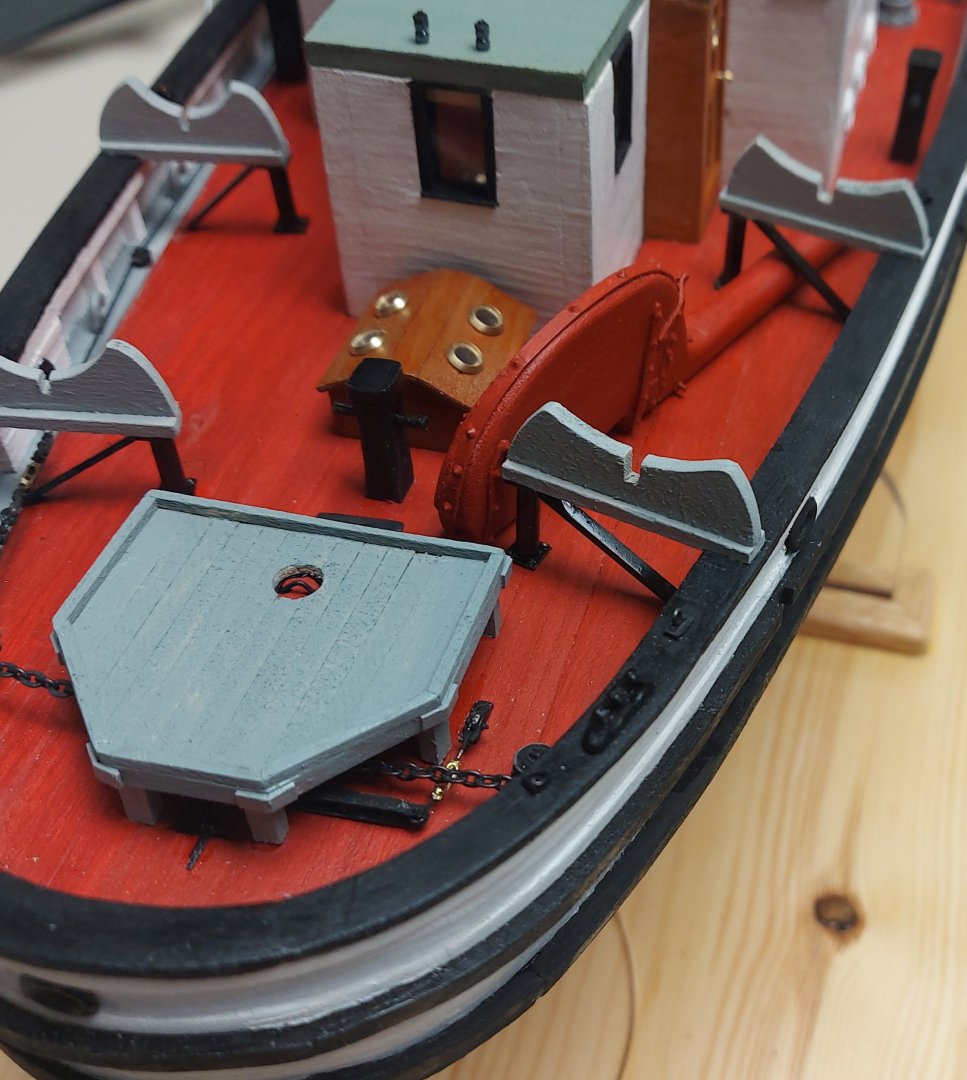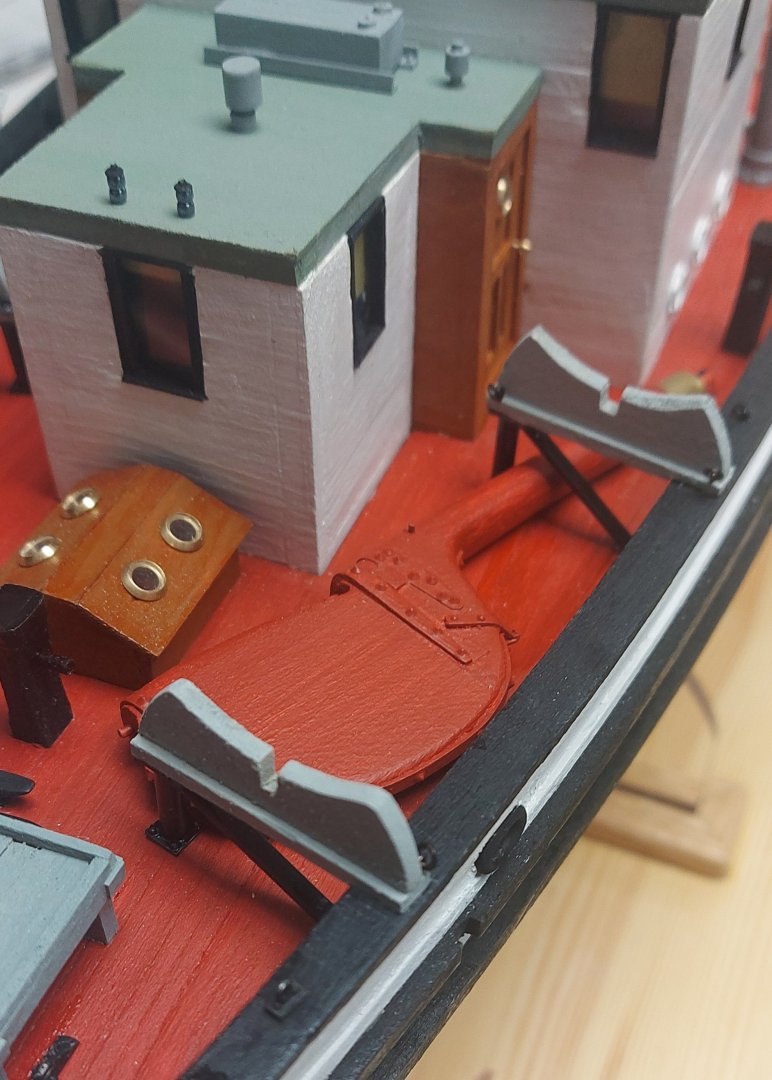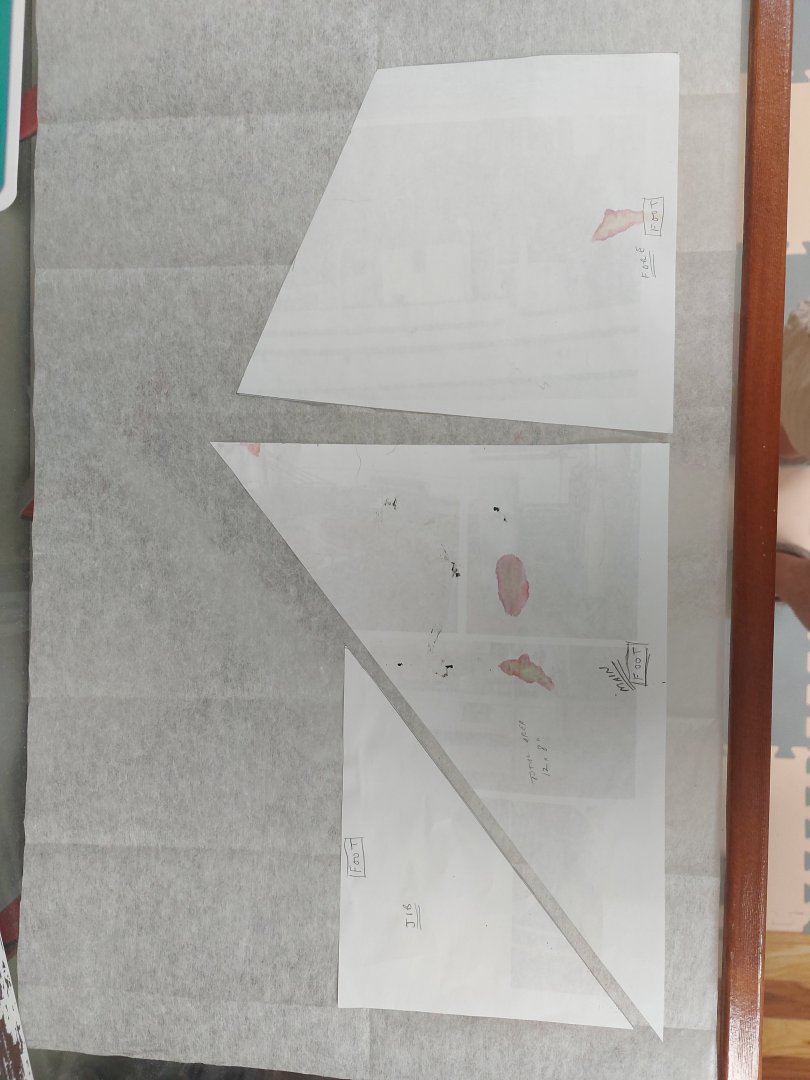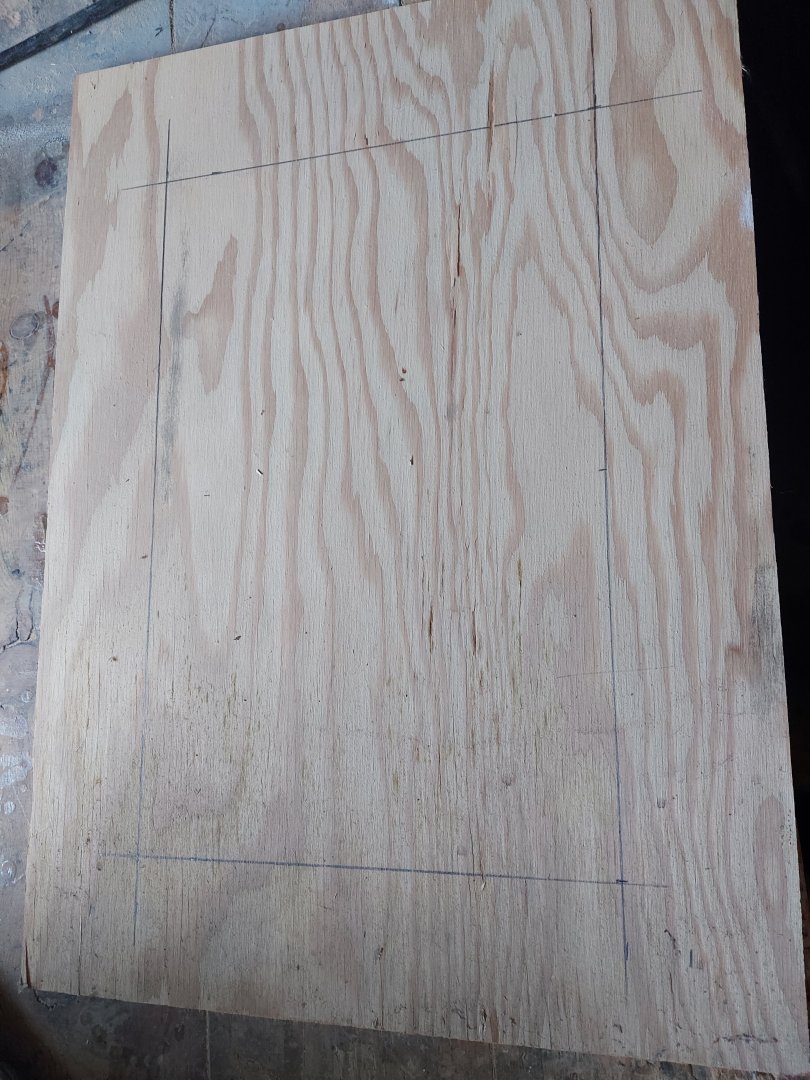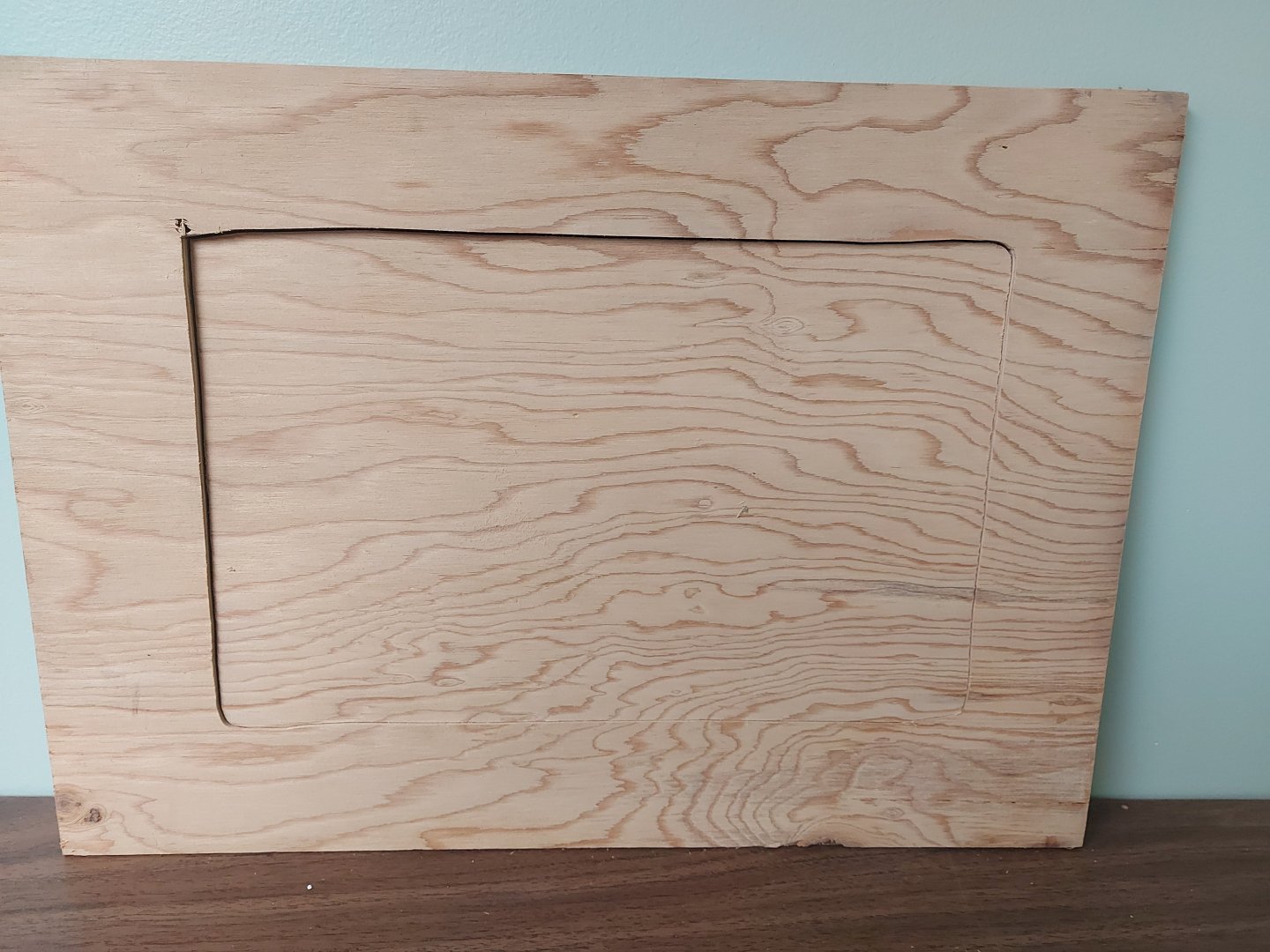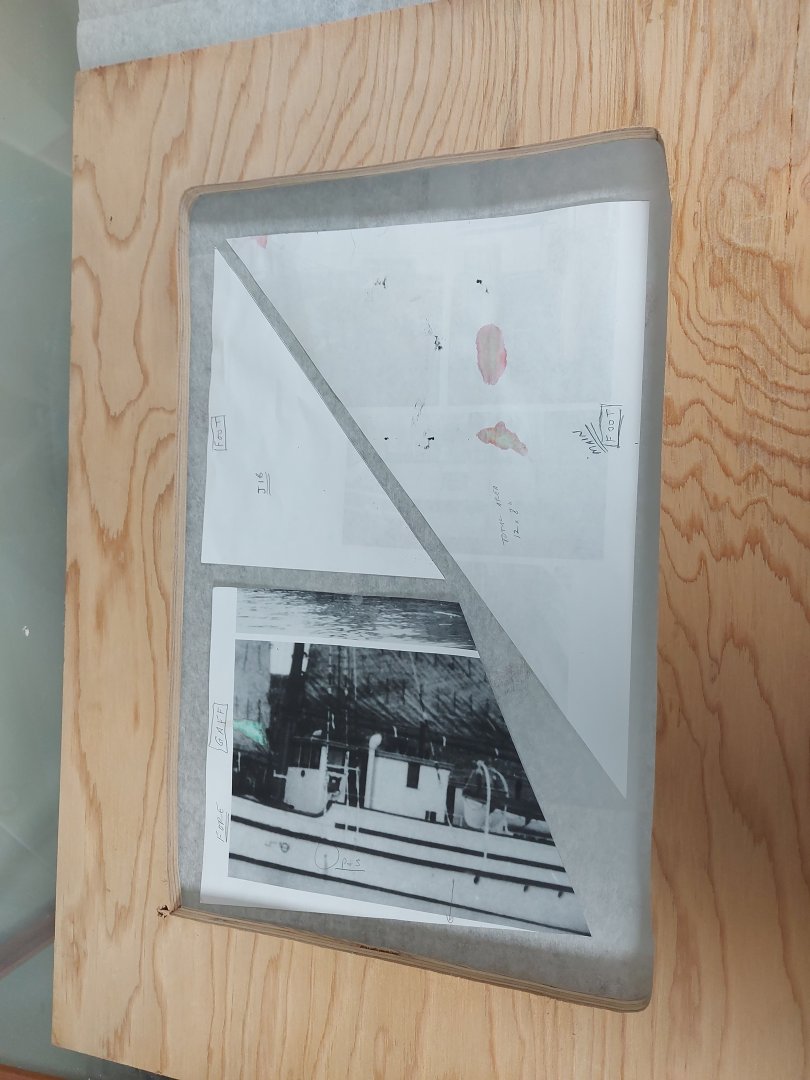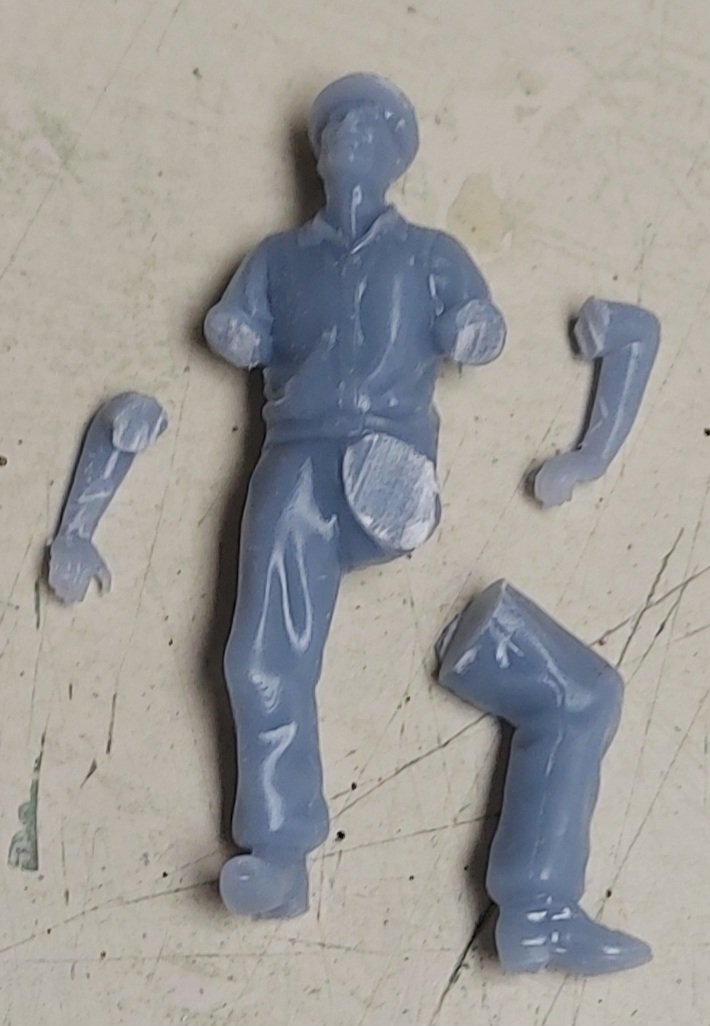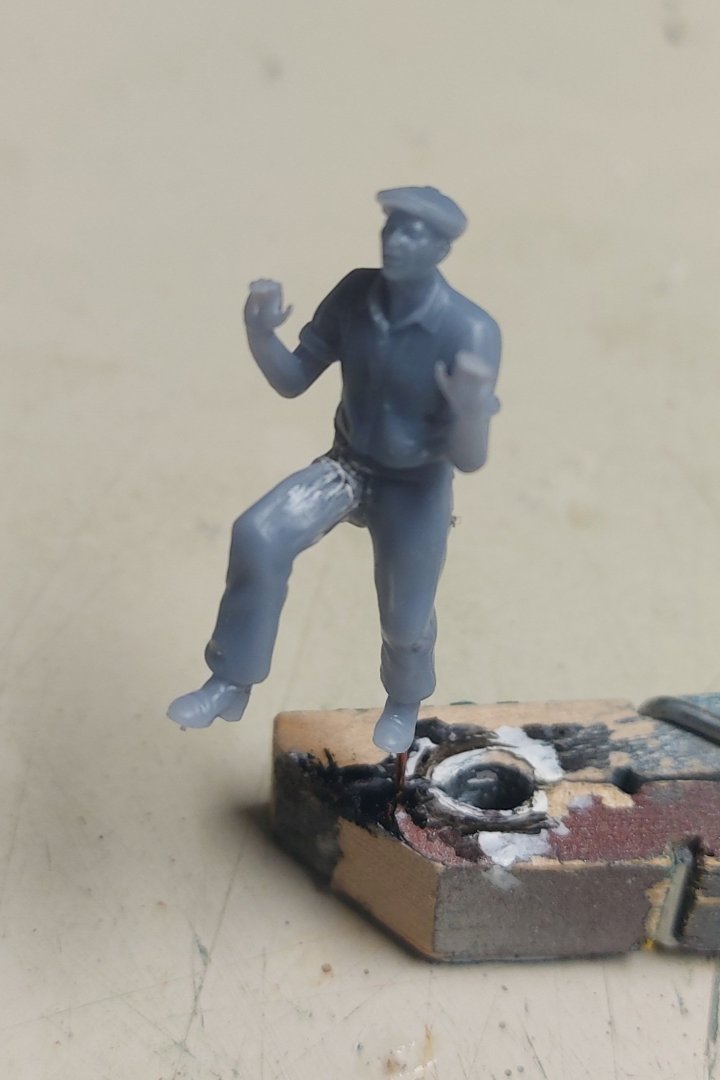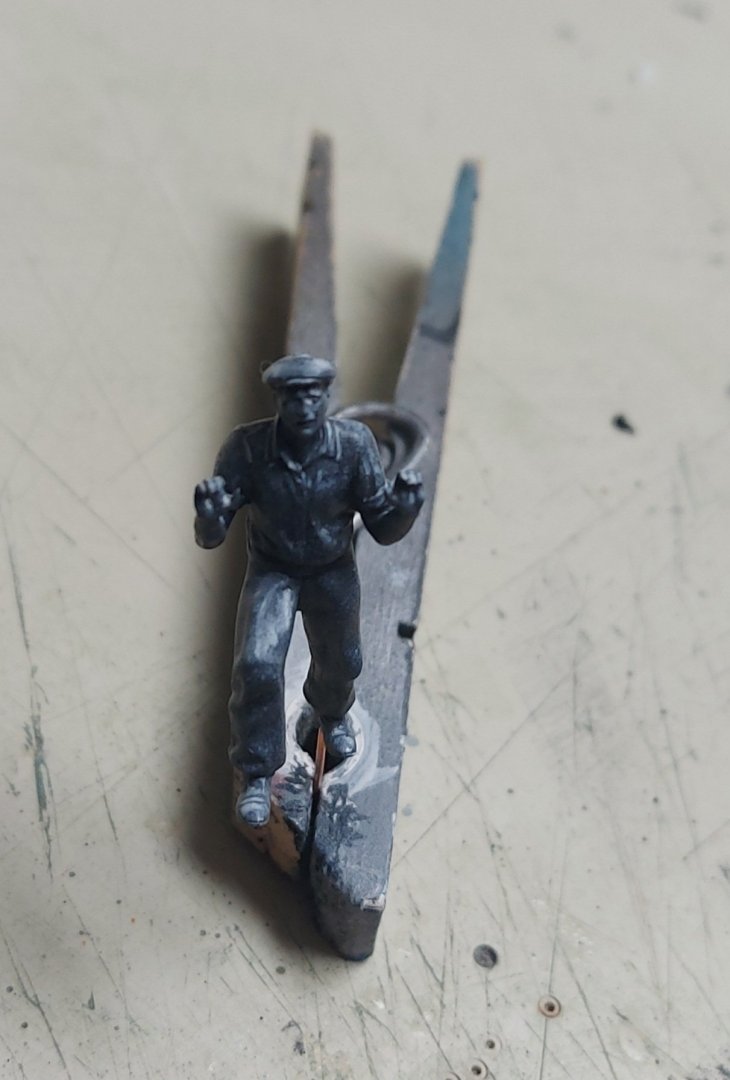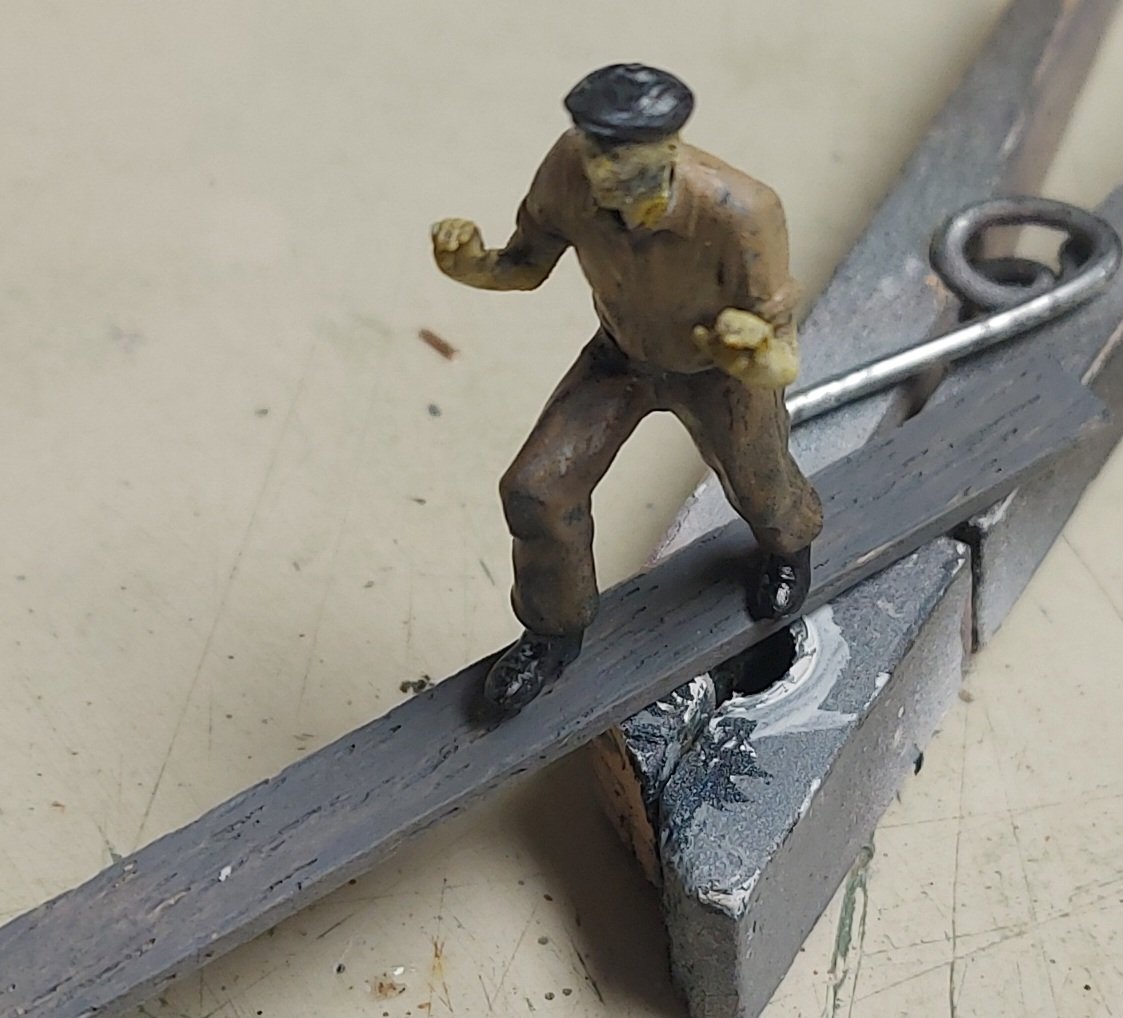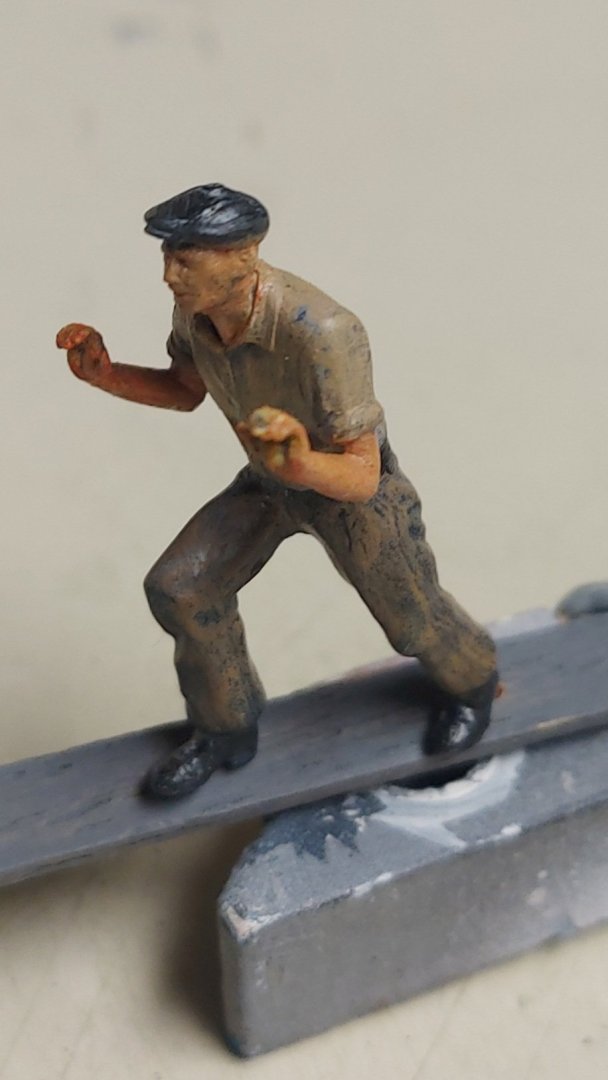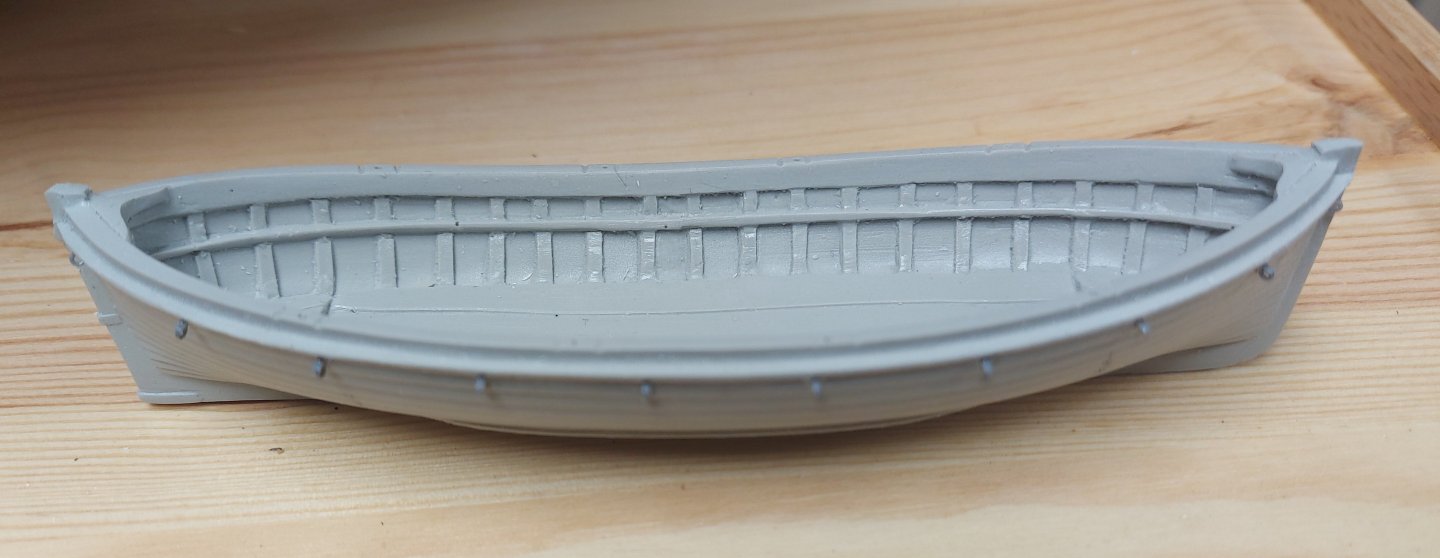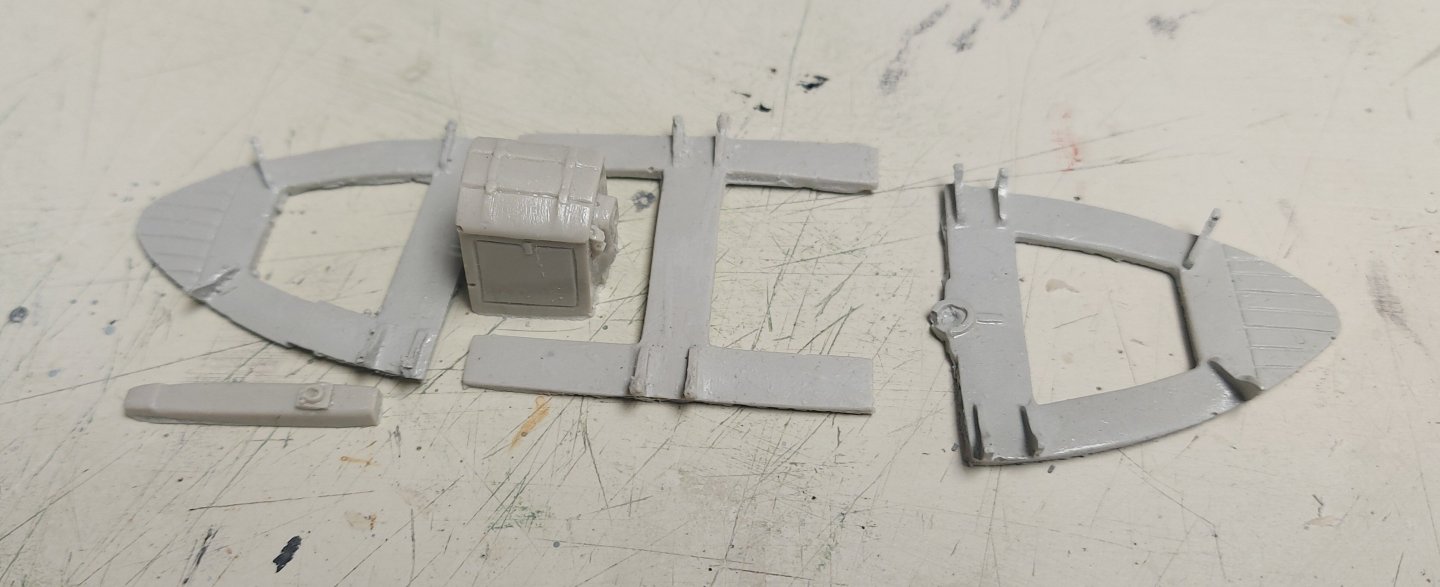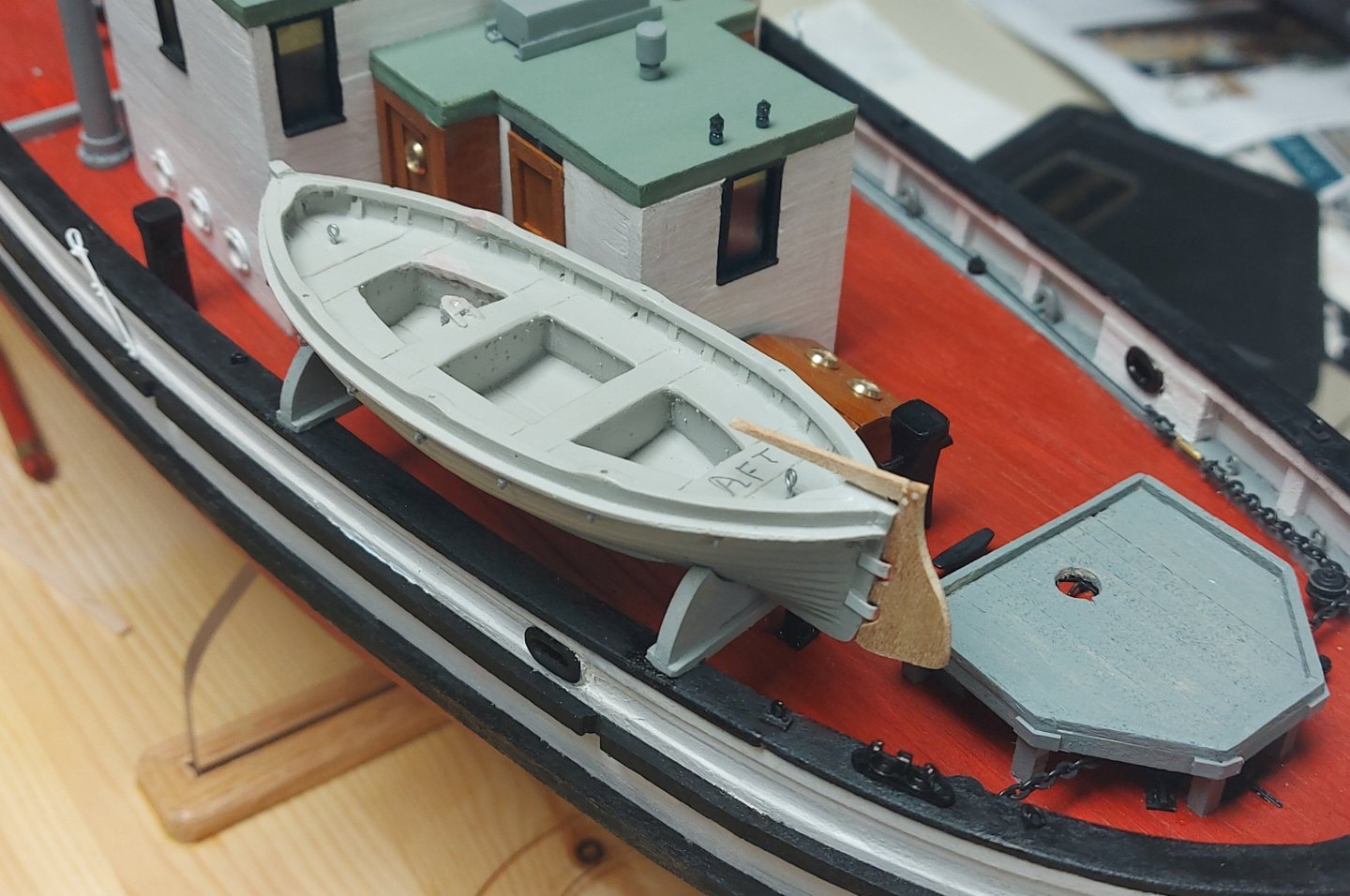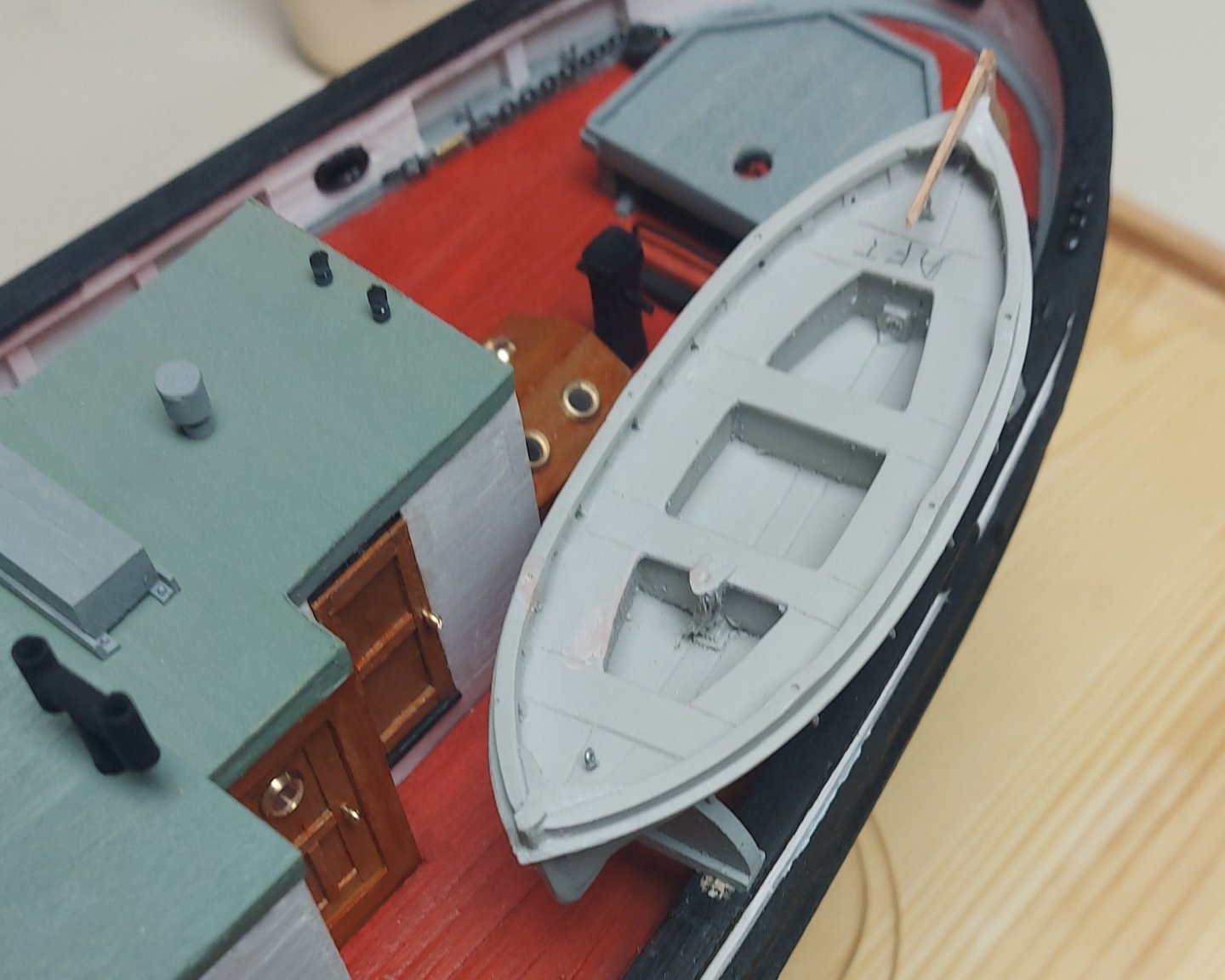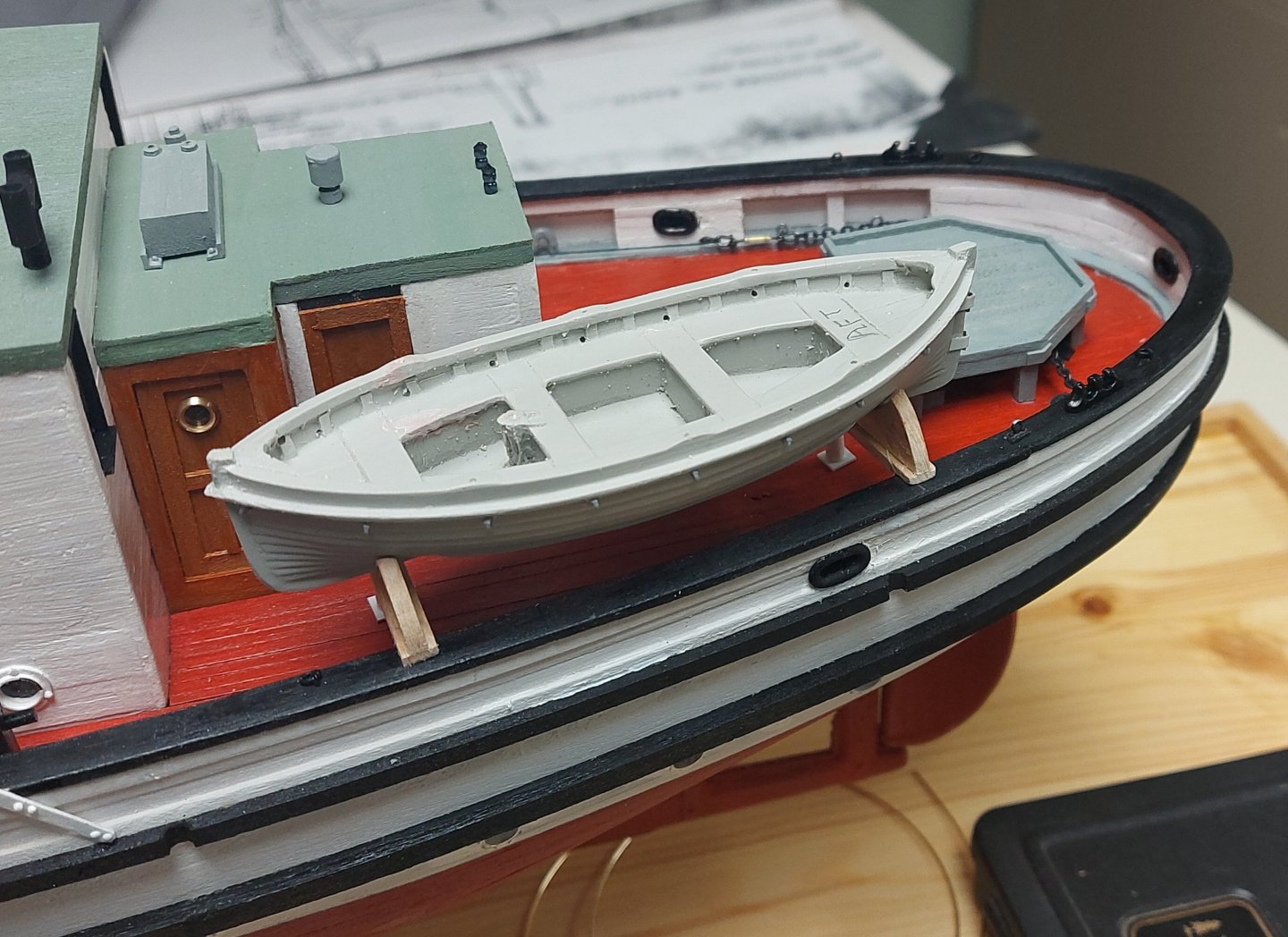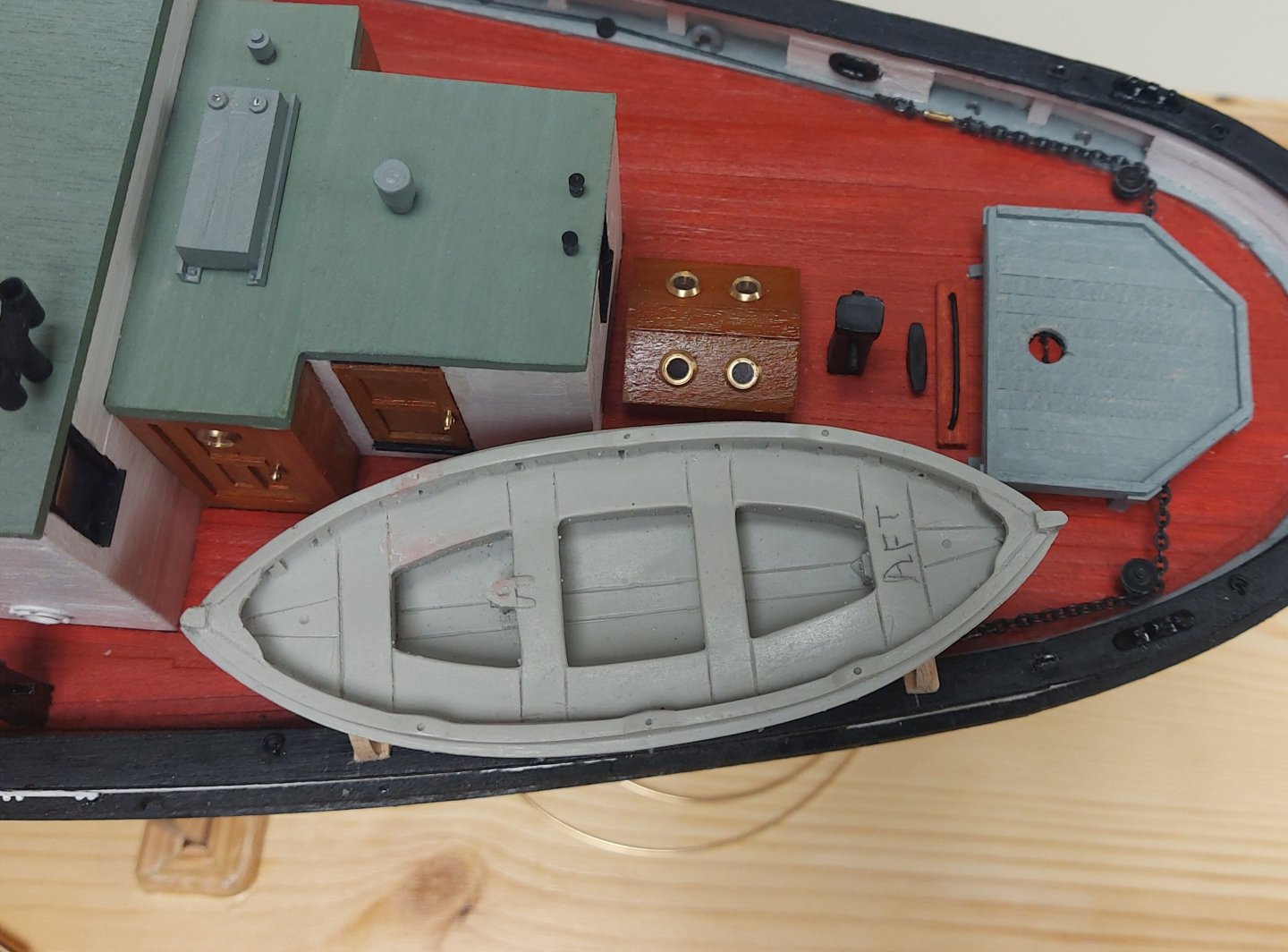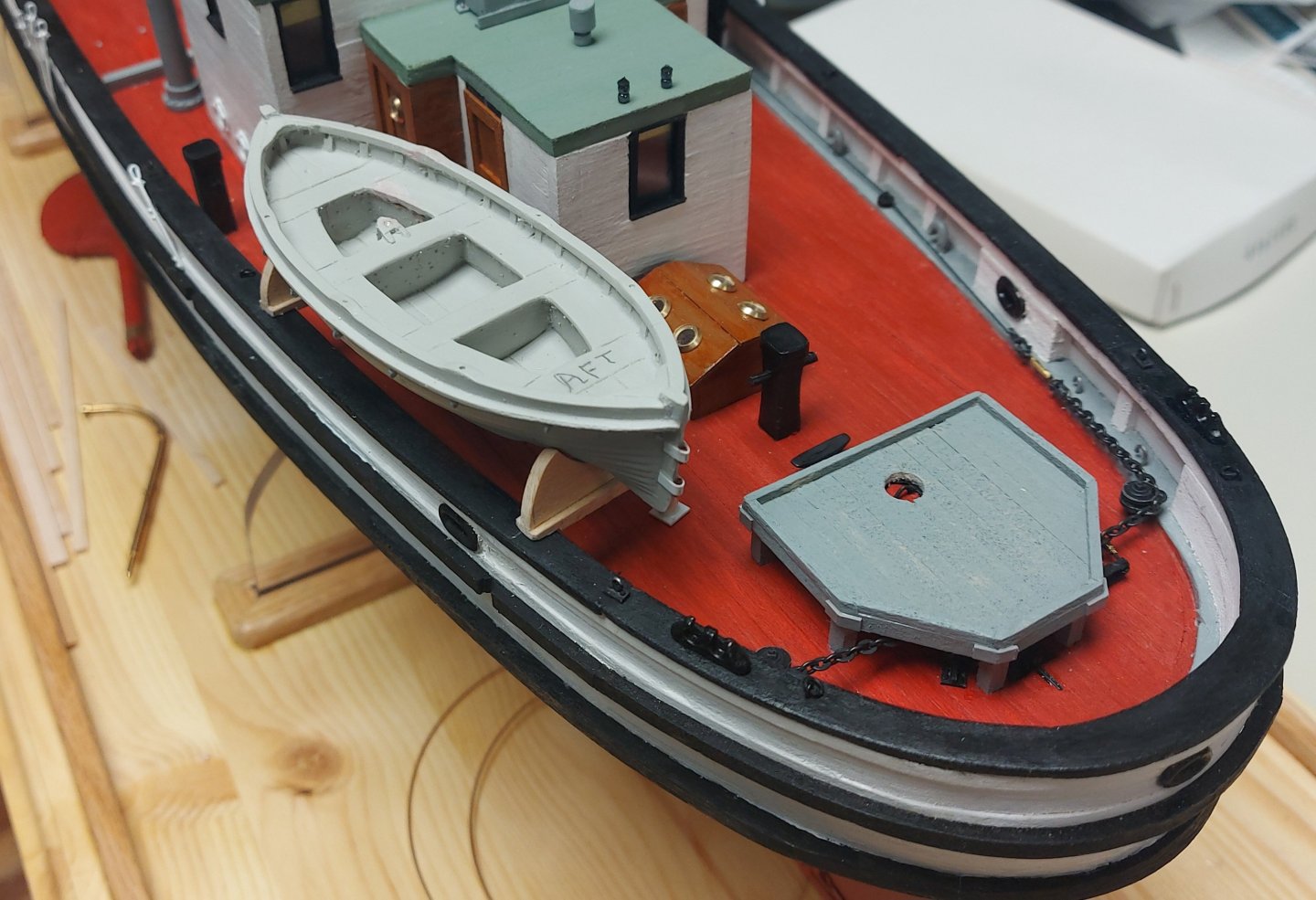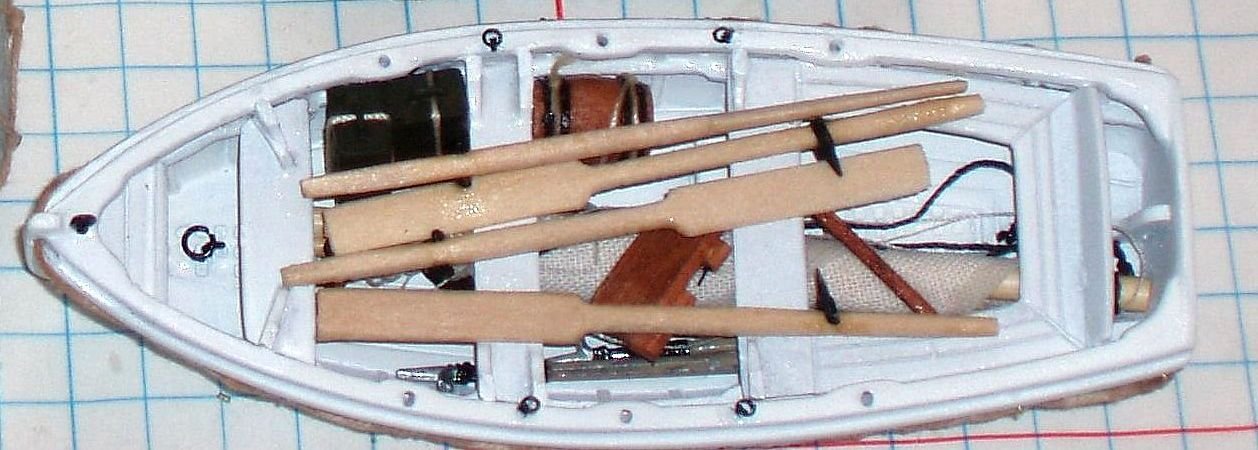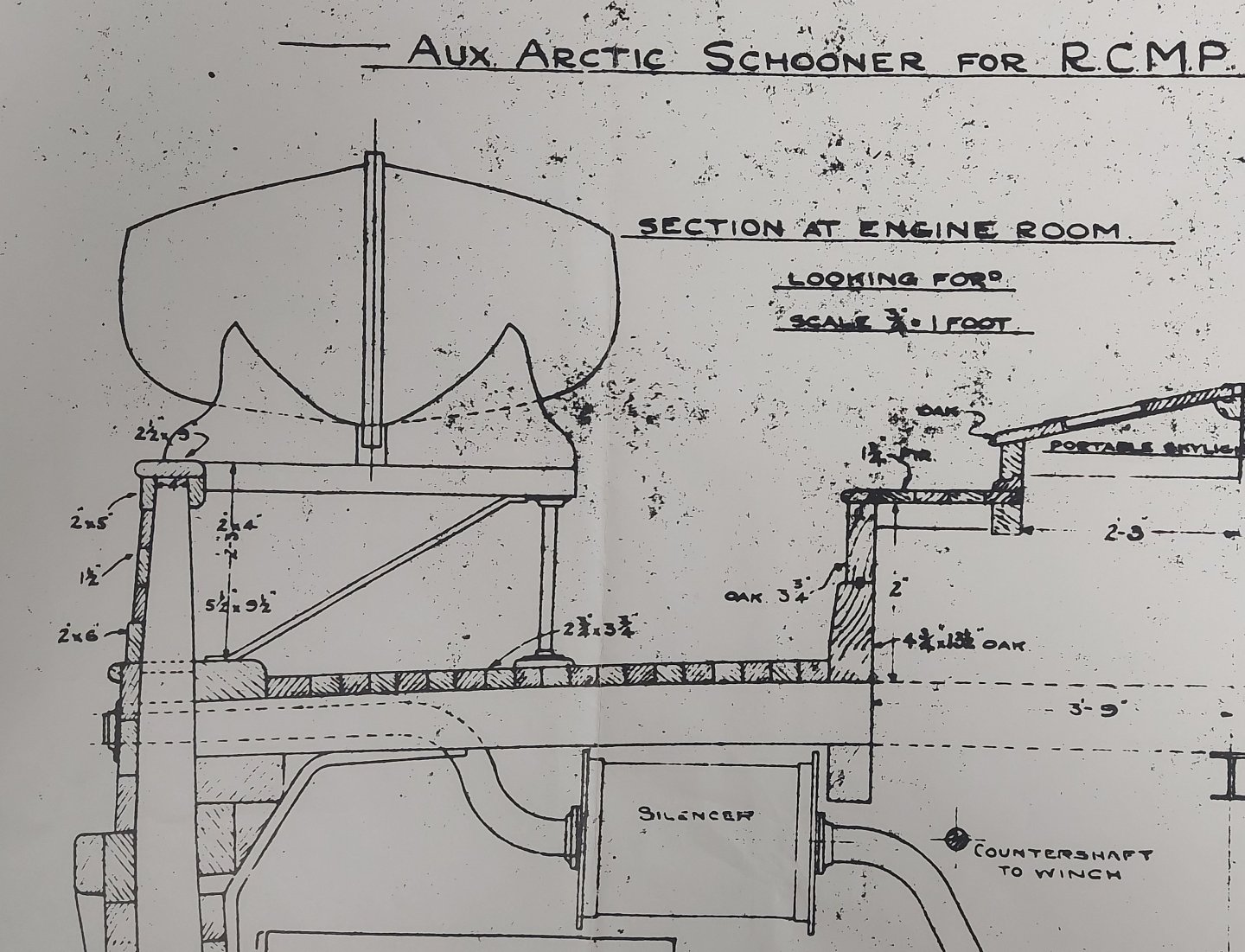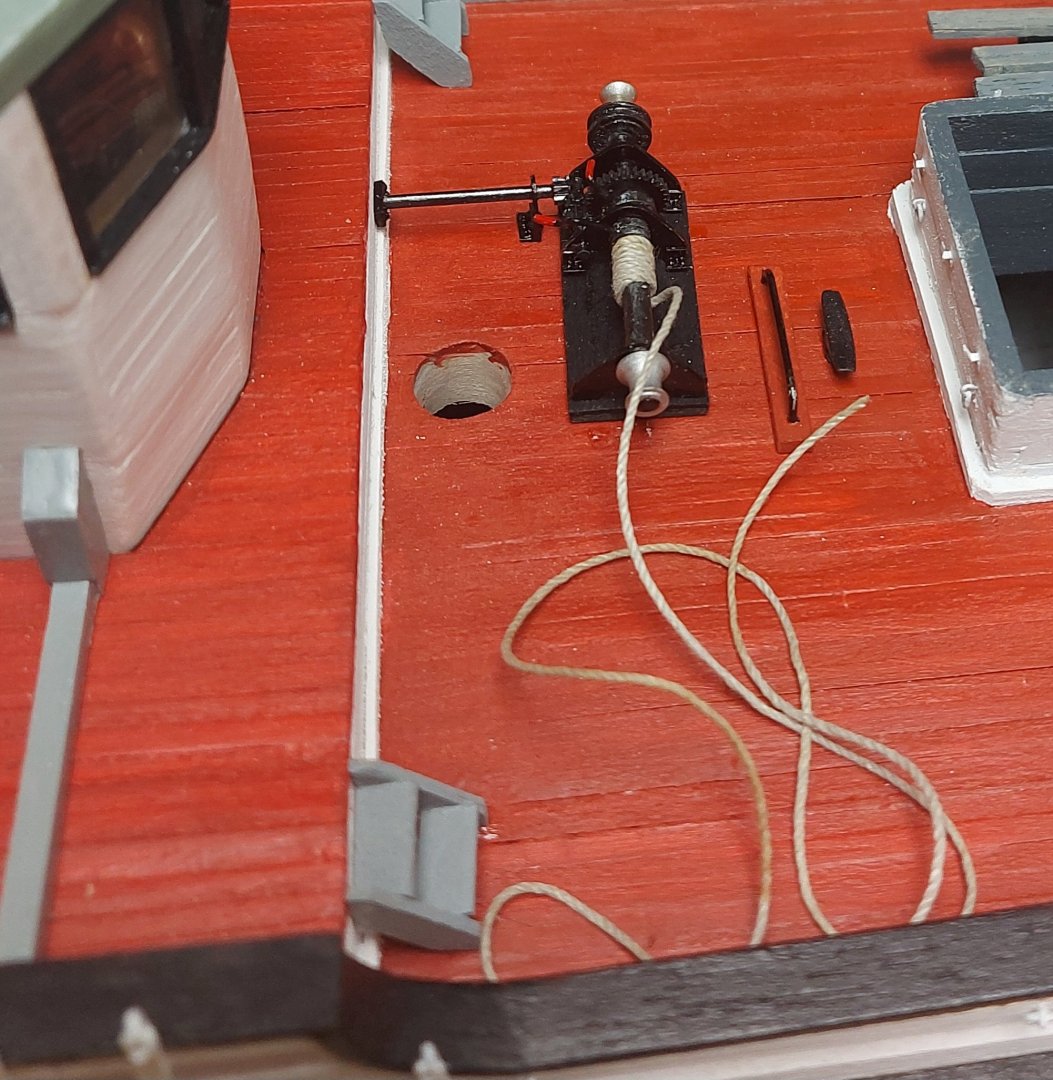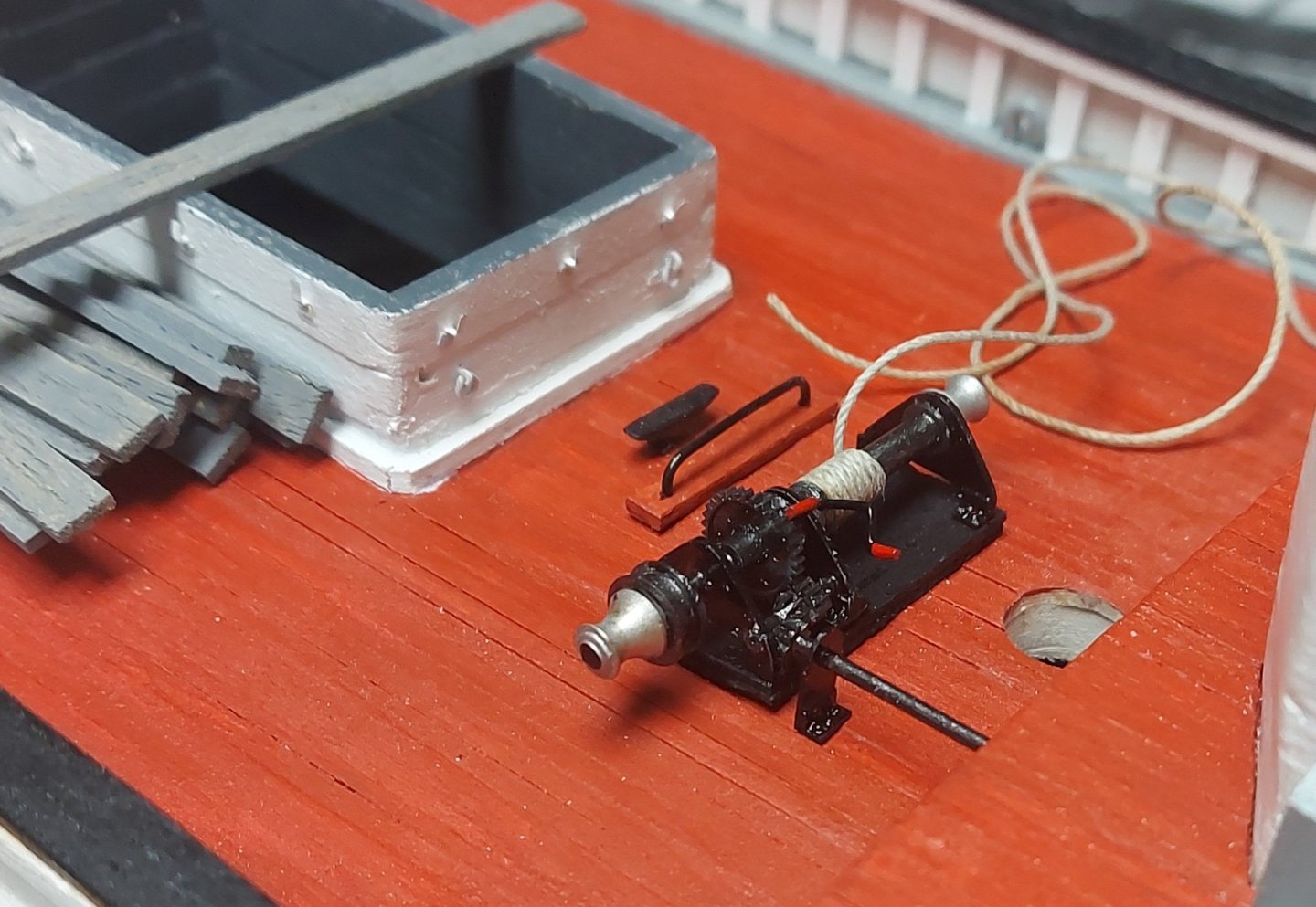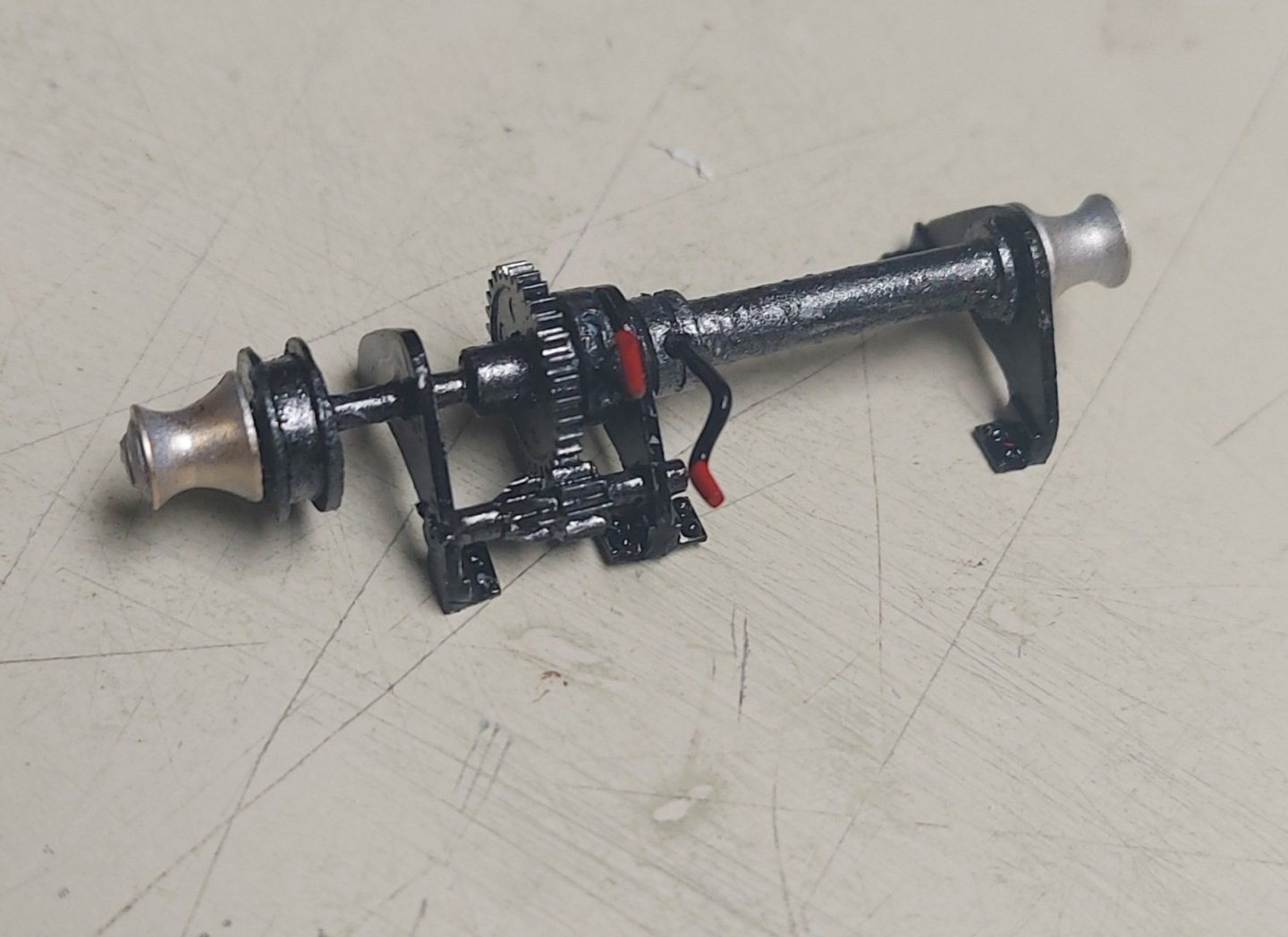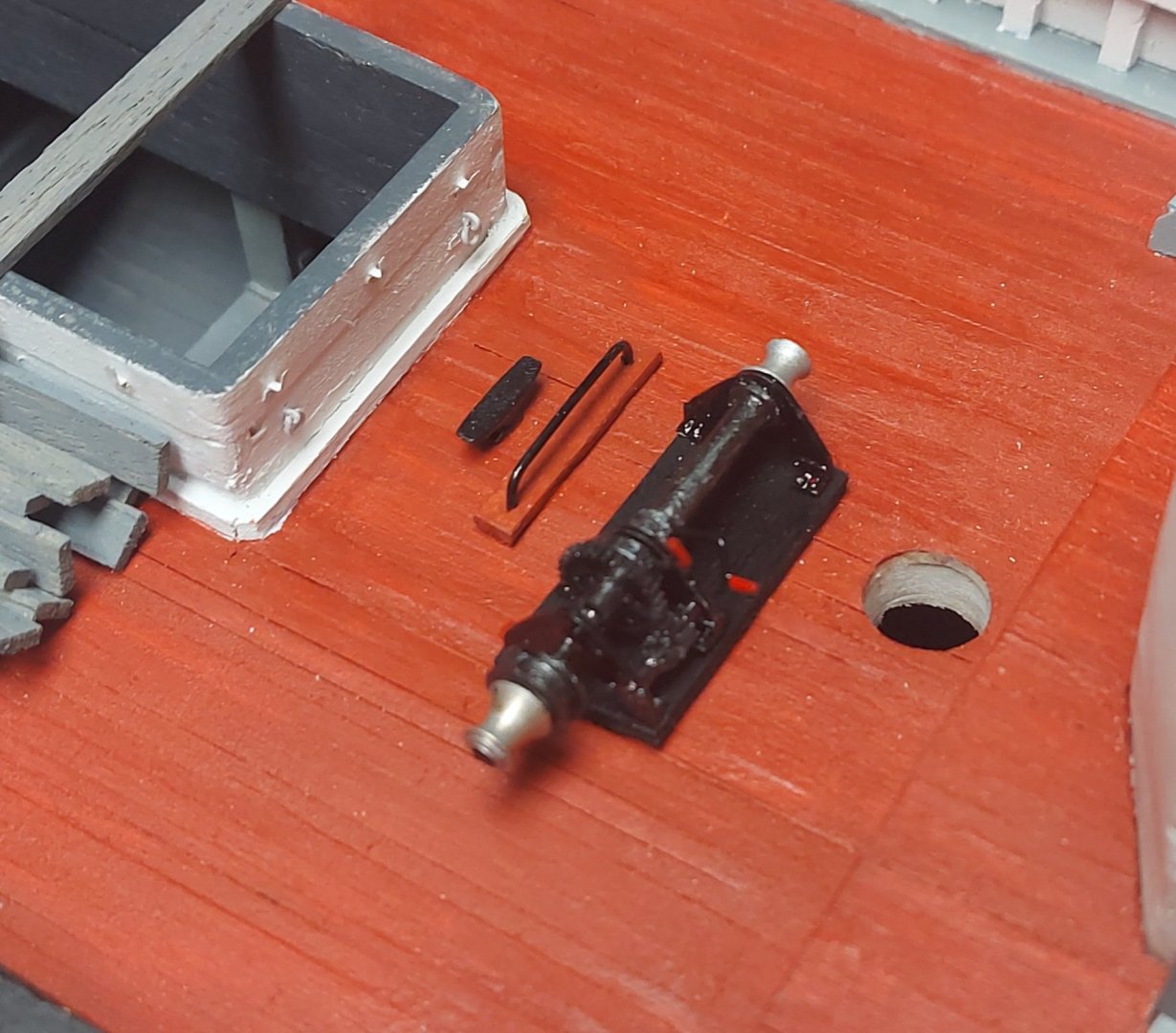-
Posts
265 -
Joined
-
Last visited
Content Type
Profiles
Forums
Gallery
Events
Everything posted by Lecrenb
-
Hi Wefalck... we enjoyed our cruise on the Seine, and the restored Notre Dame is amazing! I agree about the colour choice and I will shoot a thin coat of flat white onto my boat covers. Pictures I have show St. Roch's boat covers sometimes light, sometimes darker... could be the lighting or camera settings with black & white film... Yes, her sails today are reproductions, but originally they were cotton canvas. I'm also thinking about a light gray, off-white, for the sails and we'll see how they turn out! I appreciate your feedback, Bruce
-
I'm back, and well rested! So back to the silkspan... I decided to first work with an offcut to make the boat covers. This leaves the main piece of silkspan for the sails, and if I mess up the offcut I can still make the sails (I hope)! I had previously (on page 8 of this build log) made the frame to hold the silkspan. Now I wetted the offcut and taped it onto the frame, per David Antscherl's directions. I deviated by using medical adhesive tape since I could not get the paper packing tape in Beaumont. It is waterproof and seems to work very well. Taping two sides vs. all four did not seem to matter on a piece this size. Here is the wet silkspan drying on the frame. Next I coloured the silkspan to match what I think the boat cover canvas would have looked like. Rather than the artist's tube paints recommended by David I chose to use my Tamiya acrylics. Buying tube paints would leave me enough left over that I could will them to my heirs! The Tamiya paints are water based and give me a broader range of colours, and would go on with my airbrush, which I considered a better technique than brushing. I used a base of flat white, and added a drop of buff and another of dark sea gray. My airbrush cup was about half full, so I topped it with Tamiya thinner and sprayed it onto the silkspan. Here it is in the spray booth. I laid down two coats, light enough that there were no runs. When I moved he frame to my bench I saw that the colour was more gray than I would have liked. Memo to self, better lighting at the paint booth! Here it is drying on the bench with the boat cover templates laid on top. After it dries, if I am still not satisfied, I'll shoot another coat of diluted buff to try and get more of a canvas colour... we'll see. Next will be to cut out and assemble the covers, then try to get them to fold nicely over the boats... Thanks for looking in, tips and critiques are always welcome!
-
Santa arrived a couple of days ago, with assorted cargo for the hold! I was going to leave the hold empty to show the strong ice beams built into St. Roch, but once I decided to add a sailor unloading cargo I knew I had to have some cargo for him to work with! What arrived from Berkshire Valley (a model RR accessory company) was assorted sacks, crates, and barrels, all molded in O gauge, which is 1:48. There was just a bit of flash to clean off, then the parts, like anything coming from a mold, were rinsed thoroughly in warm soapy water to remove the mold release. Here is what they looked like: The resin parts after painting... And the cast metal sacks... the sailor has been glued to the plank he will be pushing his cargo along, in a sling suspended from the cargo derrick (one day soon!). Here is the cargo down the hold. The hatch cover canvas and boards are fixed onto the main deck, and the sailor is posed to push a sling of sacks... The details of the hold, and the ice beams, can still be seen. St. Roch shipped 150 tons of cargo for the various RCMP detachments she served, all had to be handled manually. If anyone asks me, she is at the far Eastern end of her supply run, thus almost empty! I want to thank all the forum members who gave me thoughts and ideas about the cargo scene! Regards, Bruce
-
I used my Ausfwerks Fenderbender (so named because at 7 inches long it can bend the fenders on armored fighting vehicle models in one operation) to form the gripes for the boats. This is a true miniature brake and the best engineered product I have seen. Unfortunately it is no longer in production. I am not going to be able to make the boat covers before I go away for a bit, so here are the boats in their cradles, with the gripes inside, waiting for me to get back to them! The poop deck gets even more crowded after the new superstructure is added in 1944, but for now the spare rudder can still fit along or under one of the boats! Thanks for looking in!
-
A rainy morning here in Alberta, so a good time to get some work done on St. Roch's boats... First I needed to carve back the stern of the motorboat. The first picture is St. Roch's motorboat showing the rudder and prop; this is what I am trying to emulate with the second picture... Then it was off to the paint booth... After the paint dried it was time to reeve the lifelines around each boat. I made eye splices at the end of each line... Here are the boats with the line and glue I used, ready for the final line splicing once the glue dries. I used 'No Sew' fabric glue to tack the lines into position... this dries clear and flexible, and will hold the lines in the proper shape while I make the final splices. Next I am going to make a start with the silkspan sails, and make the boat gripes and covers. Then the davits should complete the hull work on the ship except for putting some cargo in the hold. It will be very exciting to put the hull aside and start finishing the masts!
-
Thanks for the link Wefalck, I read it with interest! It seems the three methods I have come across so far are very similar, so I will proceed with reference to all three and hopefully everything will come out looking good!
-
Thanks very much Dr! I followed your link with interest, and followed on through your trials and tribulations with rigging your schooner. I must say Well Done Sir! After reading your link I have decided that airbrushing my acrylics onto the silkspan should give suitable results, so I will try that and see how things progress. I will also tape the silkspan to the frame then shoot water onto it, should help to avoid tearing! Regards, Bruce
-
Thanks Wefalck! I have heard the restoration paper referred to as Japanese tissue, and seen it used on the tv show "The Repair Shop". I was going to try it until my friend gave me some silkspan. Looking forward to Paris on the 16th!
-
I also got the boat cradles complete, now they are waiting for their boats... I now fussed around with the spare rudder, and found two ways in which it could in fact be stowed aft... The rudder is presently stowed on St. Roch's main deck, from where it would be tremendously difficult to get it aft, past the full breadth superstructure, if it was ever needed. The larger superstructure would also preclude the rudder from being stowed aft. I also don't believe the mizzen mast that was installed in 1944 had the geometry or capacity to replace the rudder if needed, unlike the previous main sail boom. I wasn't sure if there would be room after my 1930 deckhouse was built, but pictures do not show it on the main deck, so where else would it go? The next pictures give a couple of options: I think the last picture is the best guess, since the rudder would not interfere with the boat lashings. I intend to send my pics off to the Vancouver museum and ask their opinion... wish me luck!
-
I have never made sails for models before, so the old dog will try to learn another new trick, mentored by David Antscherl and his Appendix to his Sphinx series of books. Thanks you very much in advance David! Silkspan is proving very hard to come by, so I can't say enough good things about people in the modelling fraternity who open themselves and their stashes to help those in need! Needless to say, like my sailor figure, I was saved by a fellow modeller who kindly donated enough Silkspan for my St. Roch... there may even be scraps left over for lifeboat covers! My sails will be furled, to hide my inevitable mistakes as much as giving a clear view of the decks, therefore I reduced the height of each sail about 30%, to allow for scale thickness of the material! The first picture shows the paper templates I made, sitting on the Silkspan. This lets me size the required sail-making frame... I marked the foot of each sail and oriented them in the same plane, so when it is time to mark the cloths that make up each sail it should be a matter of drawing the lines in parallel across the entire sheet. I hope! I found a suitable sized piece of plywood in my garage scrap lumber stash, and using measurements taken from the templates and allowing for the required overlap of the Silkspan onto the wood, I marked out the hole to cut, creating the frame and insert in one operation. A clearance hole and one pass with my scroll saw was all it took, then a bit of finishing with my palm sander. The cut is not perfectly square because the scroll saw throat is a bit smaller than the length of cut! The insert will support the Silkspan while it is being worked on, and the frame will hold it taut. Here is the frame checking for size on my templates. I flipped over the foresail template which reduces the amount of Silkspan needed. Next step is to start painting and tinting the Silkspan to look like canvas... David recommends mixing and thinning artists' tube acrylics, but this is expensive and will be almost all left over, so I am going to try my Tamiya acrylics on an offcut piece... my experience is that the paint will remain flexible after drying, so fingers crossed! If anyone has tried this I would love to know how it turned out! Thanks for looking in!
-
Thank you very much Steve, and Alan too! That means a lot... perhaps the old dog can learn a new trick! Regards, Bruce
-
A while back I said I wanted to create a cargo handling scene involving a sailor, to give scale to the model. A friend of a friend on another modelling site knew a guy on thingiverse.com who 3D prints figures for model railroaders... he showed me a photo of the figure below that he prints in 1:160 (N scale trains), and which looked perfect for my scene! So the friend of the friend did one up for me in 1:48, and sliced the limbs off so it would lay flat, thereby saving about $15.00 in postage! Here it is, out of the envelope: And after assembly with CA glue, I drilled a hole up the leg for a wire to make handling the figure easier. It just needed a small smear of filler on the leg seam, the arms fit perfectly! I haven't painted figures in decades, staying away from them since my previous efforts all looked very cartoon-like. But now I know how to dry brush, and there is You-Tube! I used Tamiya acrylics, first priming him with semi-gloss black, then air brushing flat white from above to highlight details. Then I dry brushed various layers and colours to get the shading I wanted. I left his shoes and belt semi gloss black, adding a flat aluminum buckle and flat black cap. The pants and shirt are dark brown, followed by flat white then light brown on the shirt. Here I have posed him on the plank that he will walk across the open hold on, pushing his sling load of cargo... I dry brushed some flat yellow onto his face and arms, but he looked jaundiced, so I made a skin tone from red and yellow, which makes orange, followed by a drop of white to tone down the colour, and finally a drop of light brown... Here he is ready to install. I need to make the cargo, and the sailor may not get mounted until the main mast and cargo boom are installed, which may be a while... We'll see how it goes! I think this is not perfect but a far cry from the cartoon finishes my previous figures sported! Thanks everyone for looking in!
-
Can't say for sure about Gjoa, but on St. Roch there is a cleat adjacent to the traveller for belaying the sheet. This cleat does not show up on kit plans... perhaps pictures from the Fram museum, or asking them on email, might help? Nice job on the sails, I hope mine turn out as nice! Regards, Bruce
-
I thought folks might like to see the motorboat... so here it is, a much better quality casting similar to my aformemtioned RN dinghy, with a fully molded interior and separate parts for the motor housing and thwarts. I have cleaned up the flash and installed the rings holding the life rope around the outside. Despite having a better interior, I am still going to cover the motorboat. St. Roch's boat is under cover and I have no details on the correct interior details, especially the motor! Regards, Bruce
-
I got the rudder and tiller attached to the dinghy, also the lifting lugs (which won't be seen once the cover is on) and it is now ready for paint. I'll set it aside until the motorboat is ready then I'll shoot them both together... I sourced some silkspan from a friend on another modelling site, so once it arrives I'll start marking out the sails per David Antscherl's Sphinx Appendix volume. That is getting ahead of myself, however I want some silkspan offcuts to make covers for the dinghy and motorboat. Meanwhile the dinghy's chocks are finished and glued in place on the deck and cap rail, per the ship's plans. I still have to add the braces, but the re-routed steering cables are now in the way, so I will have to adjust the braces a bit. I won't remove them, but I have to try and get into the shipwright's heads as they carried out St. Roch's 1930 refit! A little bit of cleanup on the rail, and I'm also ready for the gripes and davits to be installed... again, I'll hold off a bit, it will be easier to rig these items once the boats are painted and installed. So there's lots to do to finish the lifeboats, so I'd better stop here and crack on! Regards, Bruce
-
Moving right along... here is the 18' dinghy test fit to its' chocks, which are placed on deck to check fits and clearances... I am following photos that show the chocks mounted on the cap rail, and the plans that show a metal pole and brace on the inboard end of the chocks. Assuming RCMP Constables in 1930 averaged 5'6" tall (165 cm) then the gunwales of the dinghy are at head height... no problem to unlash the dinghy. The boats take up much of the remaining room on the poop deck... there will be a 20' motorboat on the starboard side. The deckhouse did not extend aft until 1930, however the lobby and wireless office doors can both swing open (the camera angle shows it tight, but there is 18 scale inches between the house and the boat). The davits, which mount outboard on the rub rail, also line up pretty well with their position relative to the dinghy, as seen in photos. Here is the test fit from aft... The notches in the wale for the davits are more clearly seen, and I have glued the pintles and gudgeons to the dinghy, ready for the rudder to be added. It is clear now that with the extended deckhouse there is no room for the spare rudder, either under or alongside one of the boats. It also can't be lashed to the deckhouse because the rudder post will foul the main boom. Looks like it may have to be stowed on the main deck, but before I make a final decision I will consult the Vancouver Maritime Museum... Thanks again for looking in!
-
I had previously used Quaycraft 16' RN pattern dinghys for my HMCS Chicoutimi corvette model, and I was very impressed with their high quality, detail, and accuracy. This first photo shows the dinghy I fitted out for HMCS Chicoutimi. I went looking for Quaycraft boats for St. Roch, and found both the 18' double ended dinghy and 20' double ended motorboat that I needed at Cornwall Model Boats. Unfortunately they were out of stock and Quaycraft had shut down due to illness. When talking to Cornwall Model Boats I discovered they had the rights to Quaycraft products and could cast the resin models of the boats I needed! Unfortunately the quality of the boats I ordered for St. Roch was not equal to the earlier dinghy models I ordered. There was a fair bit of flash to clean up and the interior of the 18' dinghy was only partially molded, the majority being solid resin, as seen in the photo below. I cleaned up the exterior and added rings for the life rope that will run around the upper hull. I was going to equip the dinghy, but I really have no choice now but to model it with a cover. A bit disappointing, but accurate for St. Roch's display! I have made the boat chocks, and I have to transfer the measurements to St. Roch's hull so I can accurately fit them there. The plan below is part of the designer's 1928 drawing, and photos of the boat mounts matches this drawing. Once the mounts are made and the boats are painted I will finish detailing them with their covers and gripes. Then I will have to see if there is room on the poop for the spare rudder, and if not, decide where it will go! Thanks for looking in and following along!
-
Cargo winch is done and fitted to St. Roch... the shaft to the break is the power take off from the main engine, engaged when the winches needed to be operated. The line will extend up the cargo boom via a pair of pulleys and end in a cargo hook. My intent is to show a crewman handling cargo coming up from the hold, using the cargo boom. Look back a few posts and you will find the photo that inspired me to add this feature. The idea is not to copy the whole scene, but to use the crewman to give a sense of scale to the model while illustrating the main role of St. Roch, to be a supply vessel for Arctic detachments. Still not sure about stowing the rudder here, so I'm moving on to the poop deck and the life boat mountings... Thanks for looking in!
-
Here is the cargo winch finished, except for the power take-off shaft... Here it is trial fitted on the base. The pulleys on each winch line up and clear the main hatch, so if they were rigged to power the anchor winch they would be accurate! Thanks all for looking in! Bruce
About us
Modelshipworld - Advancing Ship Modeling through Research
SSL Secured
Your security is important for us so this Website is SSL-Secured
NRG Mailing Address
Nautical Research Guild
237 South Lincoln Street
Westmont IL, 60559-1917
Model Ship World ® and the MSW logo are Registered Trademarks, and belong to the Nautical Research Guild (United States Patent and Trademark Office: No. 6,929,264 & No. 6,929,274, registered Dec. 20, 2022)
Helpful Links
About the NRG
If you enjoy building ship models that are historically accurate as well as beautiful, then The Nautical Research Guild (NRG) is just right for you.
The Guild is a non-profit educational organization whose mission is to “Advance Ship Modeling Through Research”. We provide support to our members in their efforts to raise the quality of their model ships.
The Nautical Research Guild has published our world-renowned quarterly magazine, The Nautical Research Journal, since 1955. The pages of the Journal are full of articles by accomplished ship modelers who show you how they create those exquisite details on their models, and by maritime historians who show you the correct details to build. The Journal is available in both print and digital editions. Go to the NRG web site (www.thenrg.org) to download a complimentary digital copy of the Journal. The NRG also publishes plan sets, books and compilations of back issues of the Journal and the former Ships in Scale and Model Ship Builder magazines.





